Mount Hood Snow – Government Camp, Oregon February 4, 2008
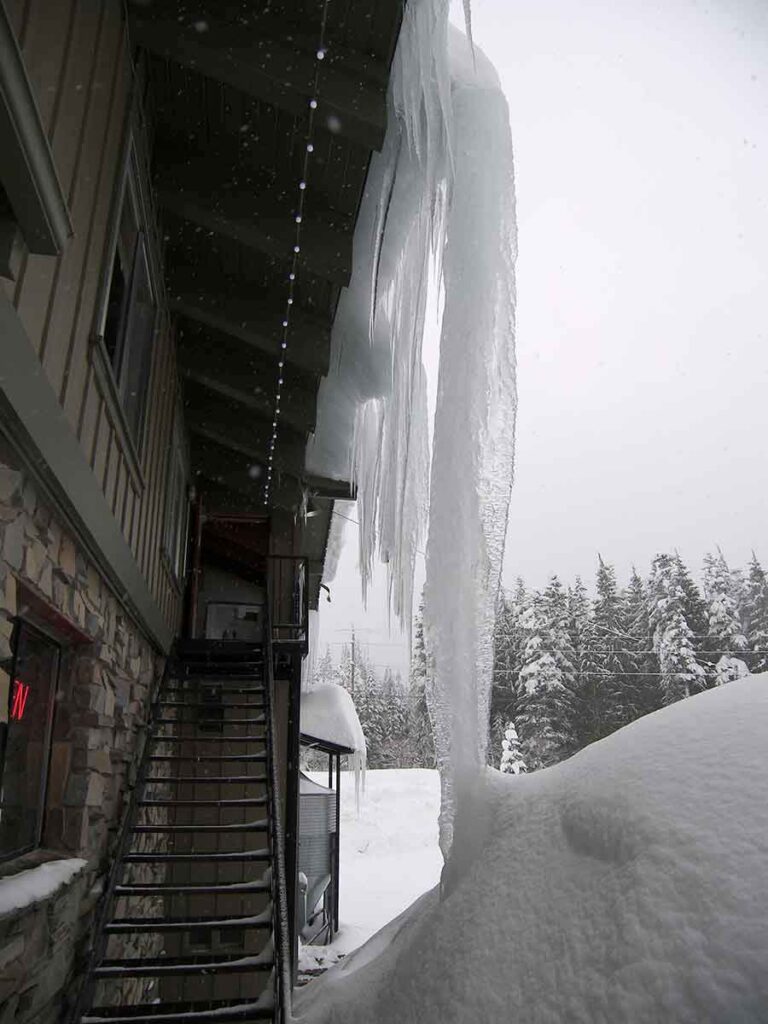
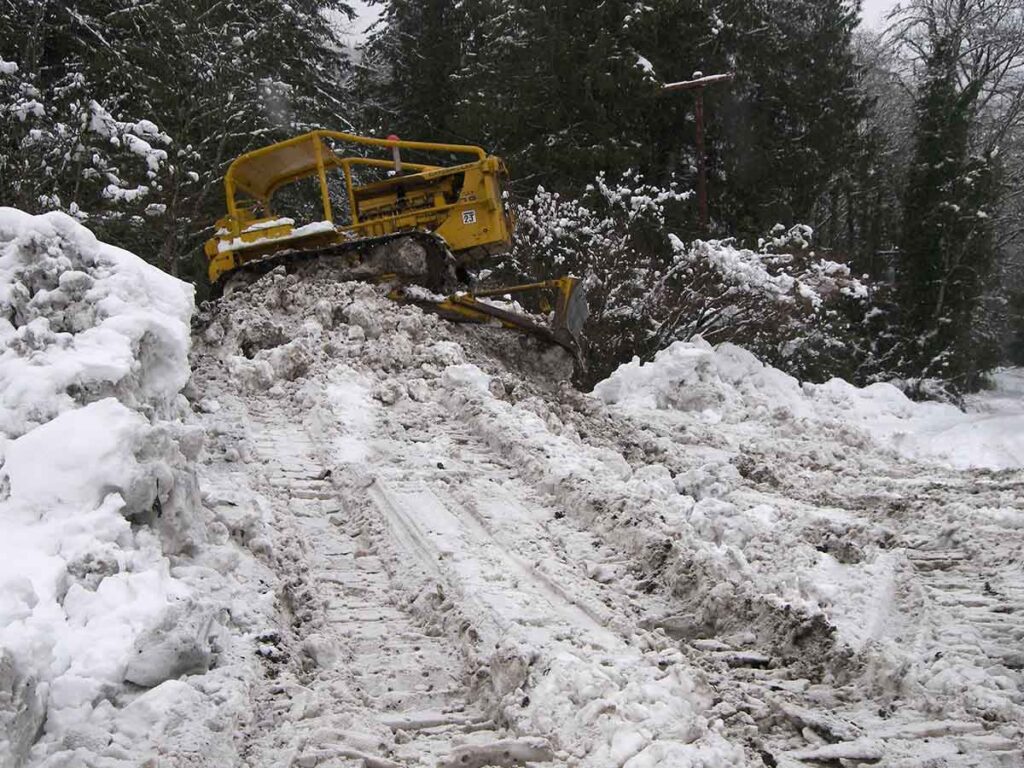
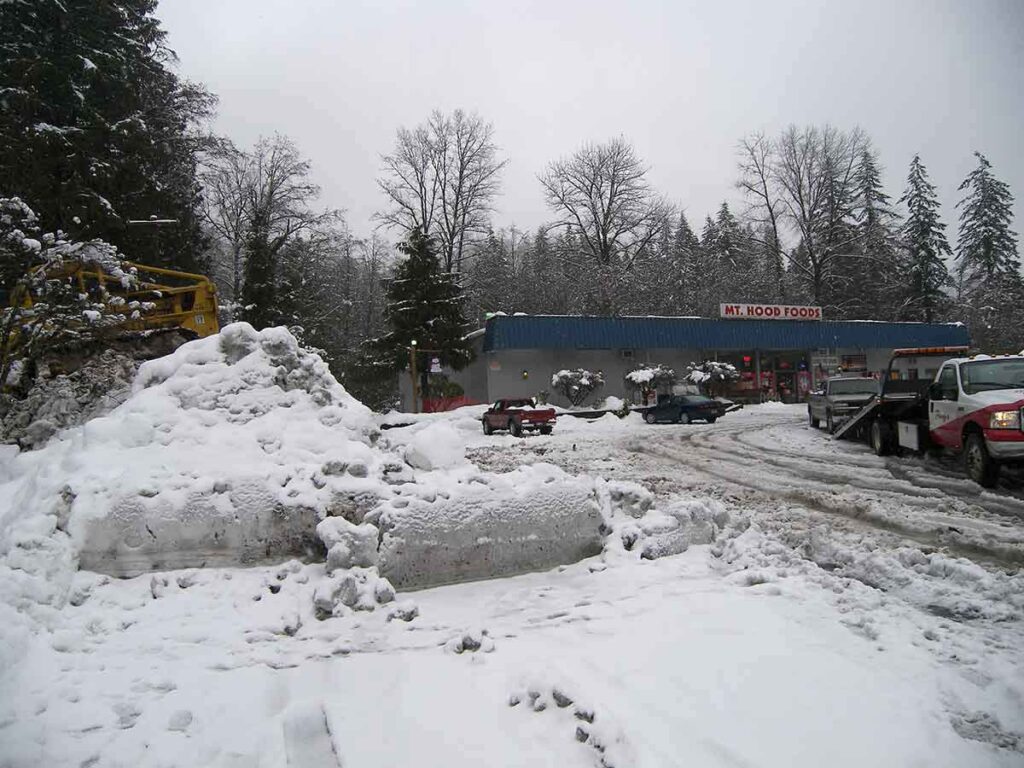
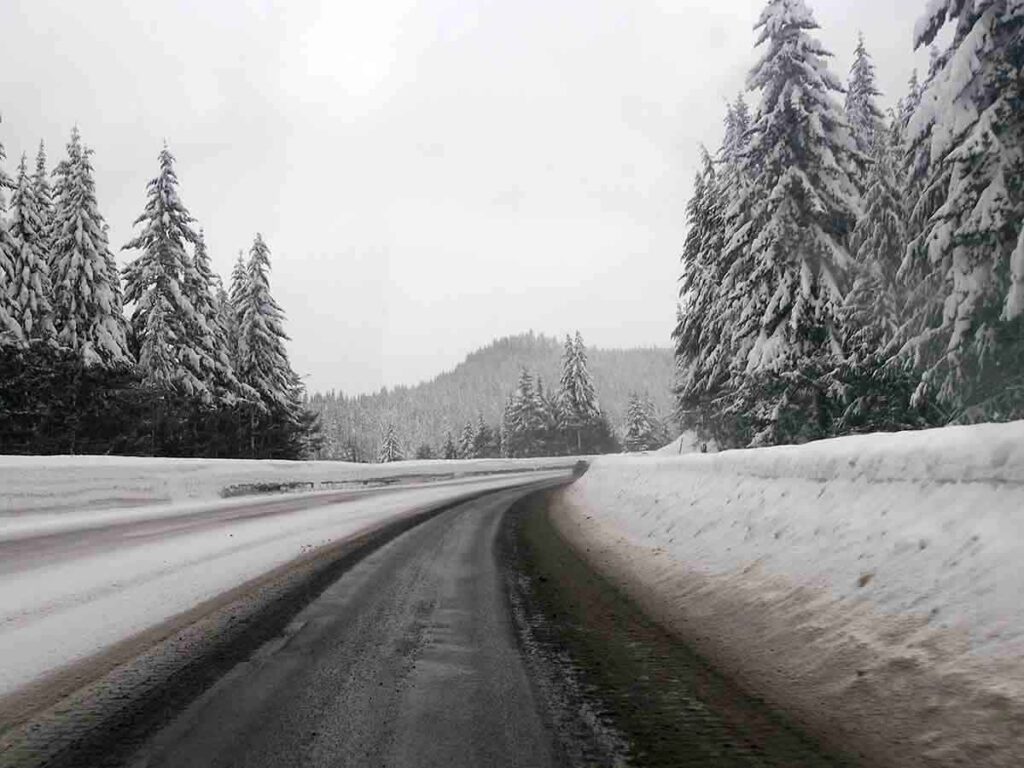
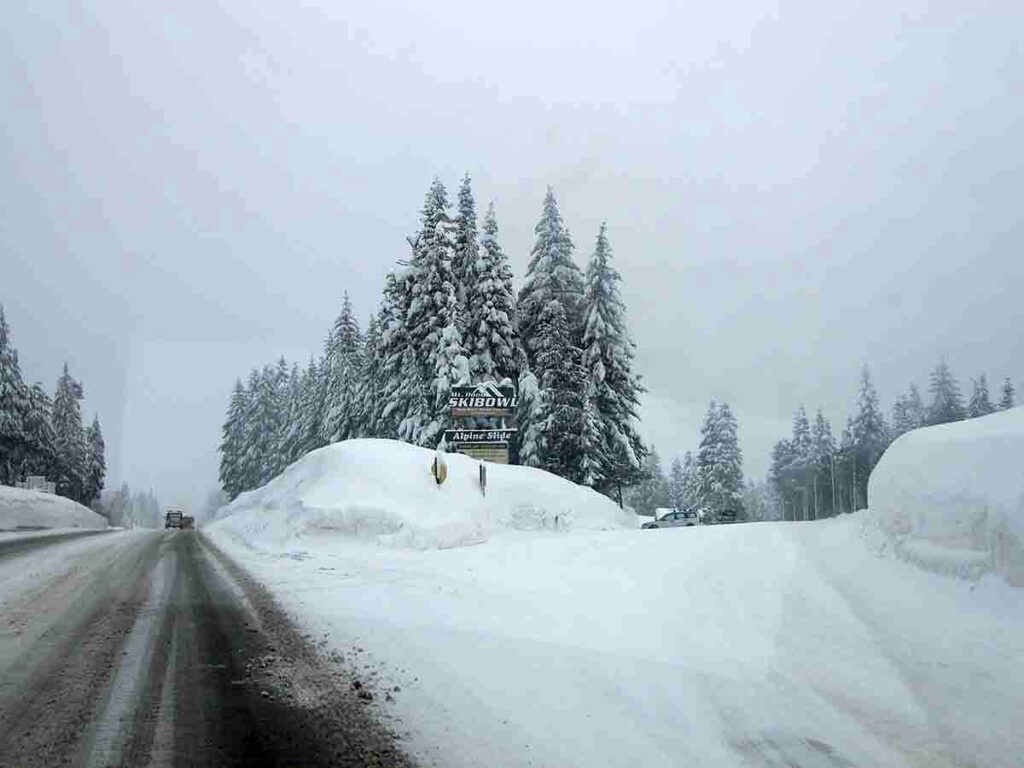
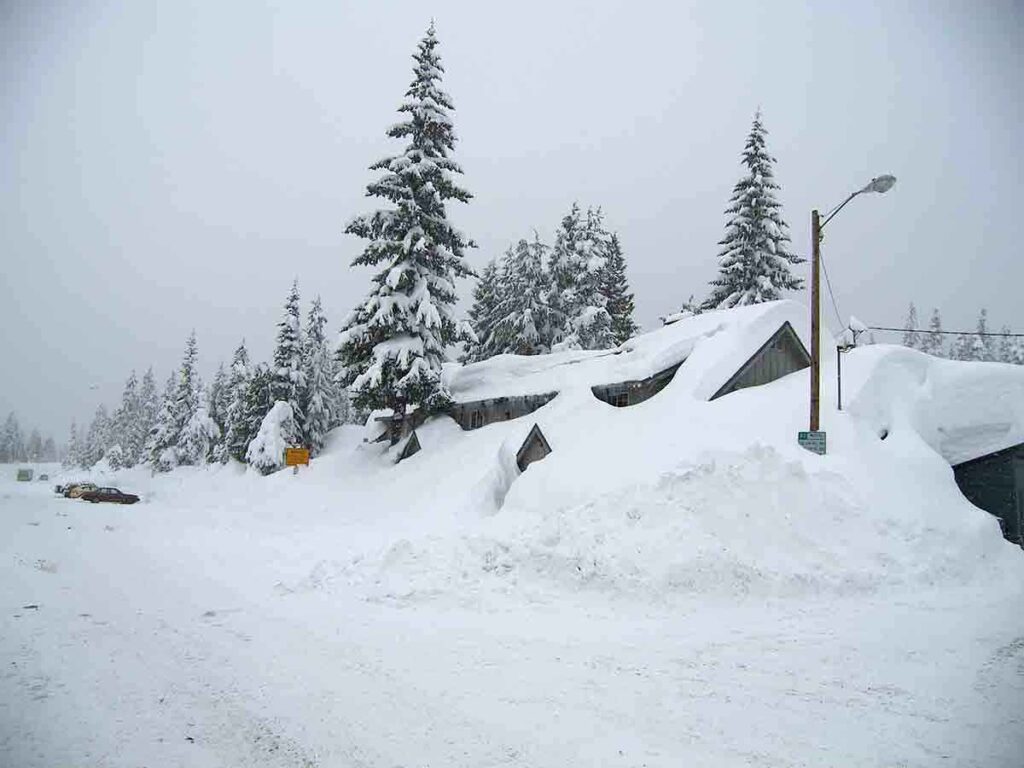
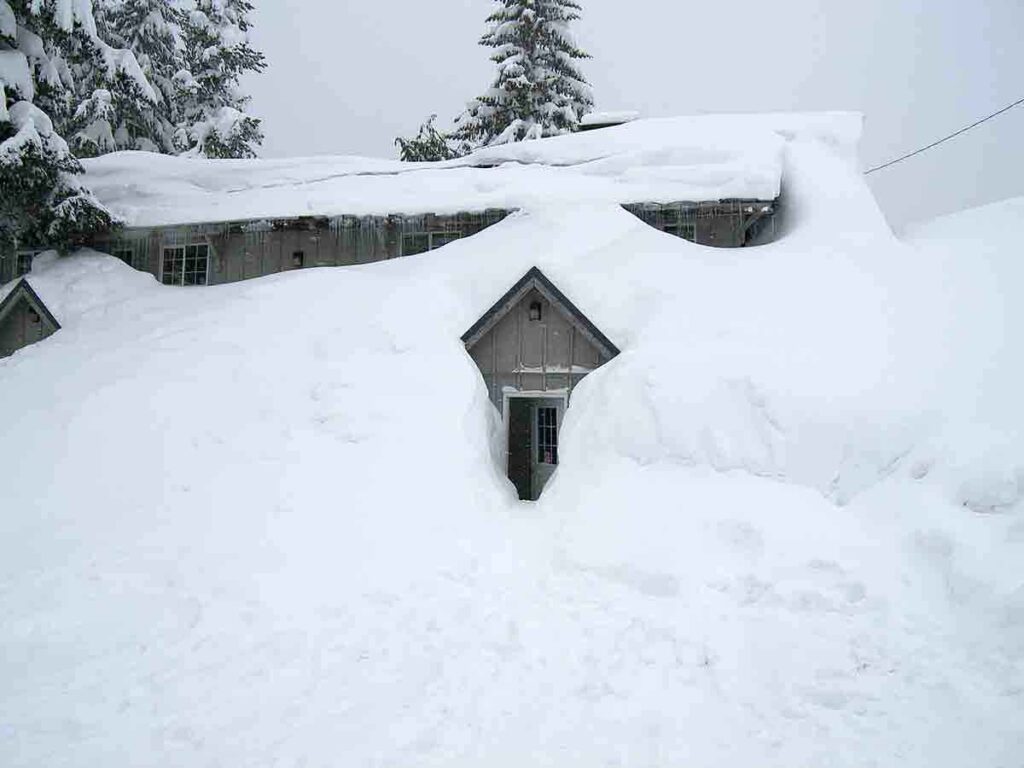

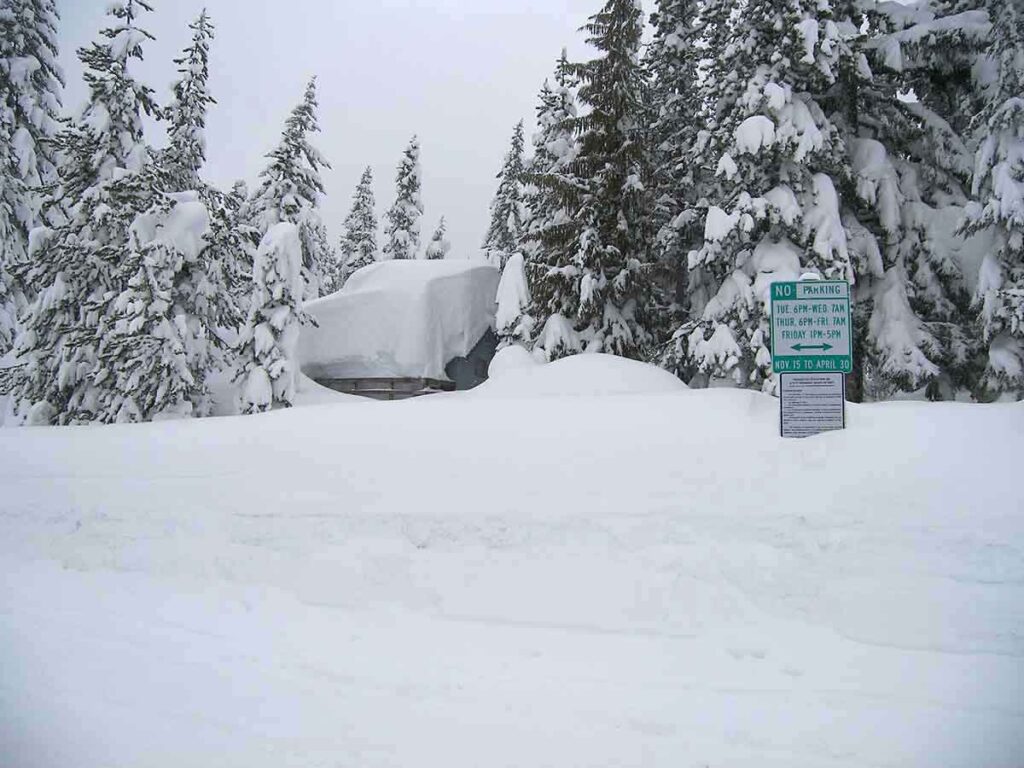
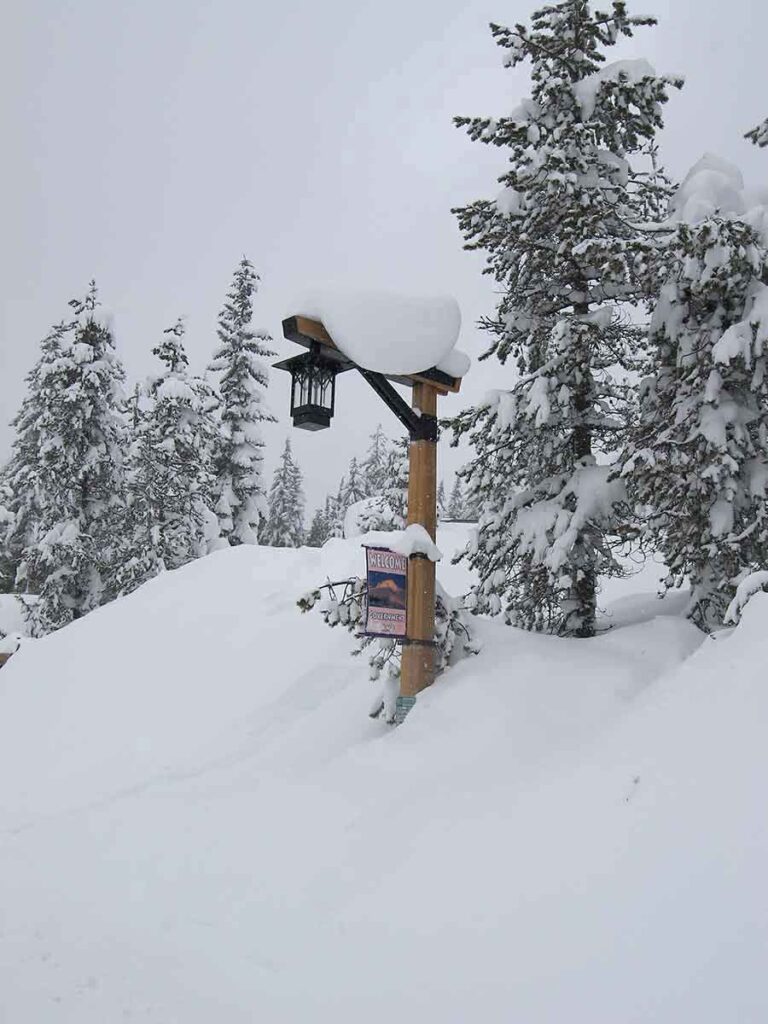
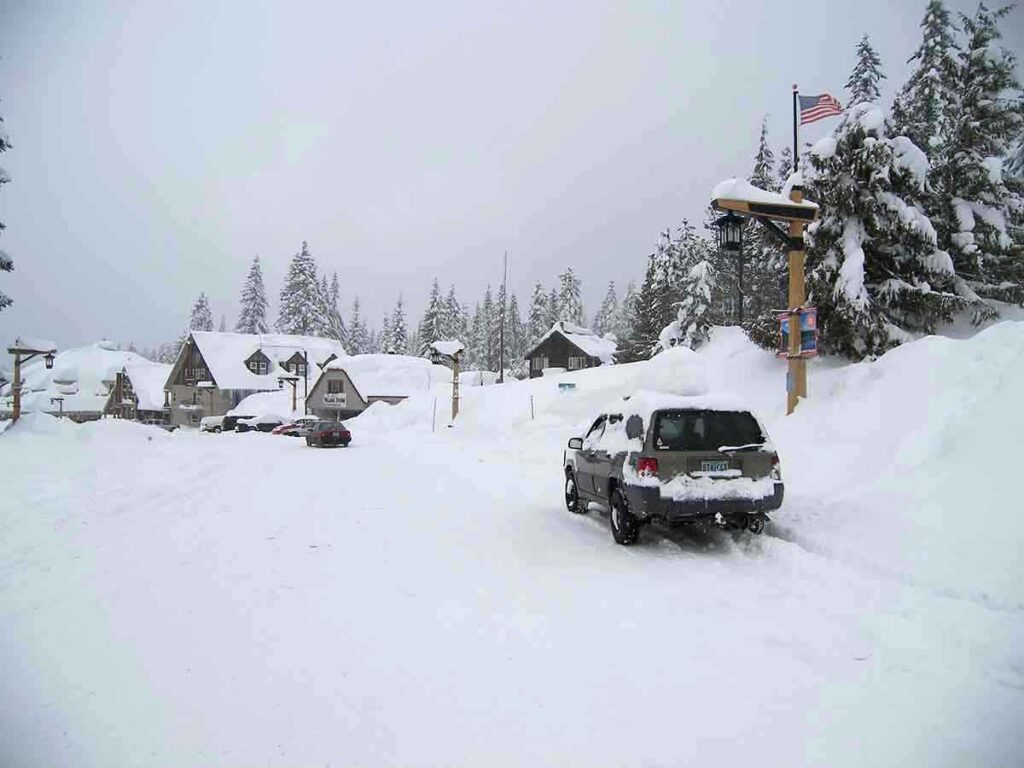

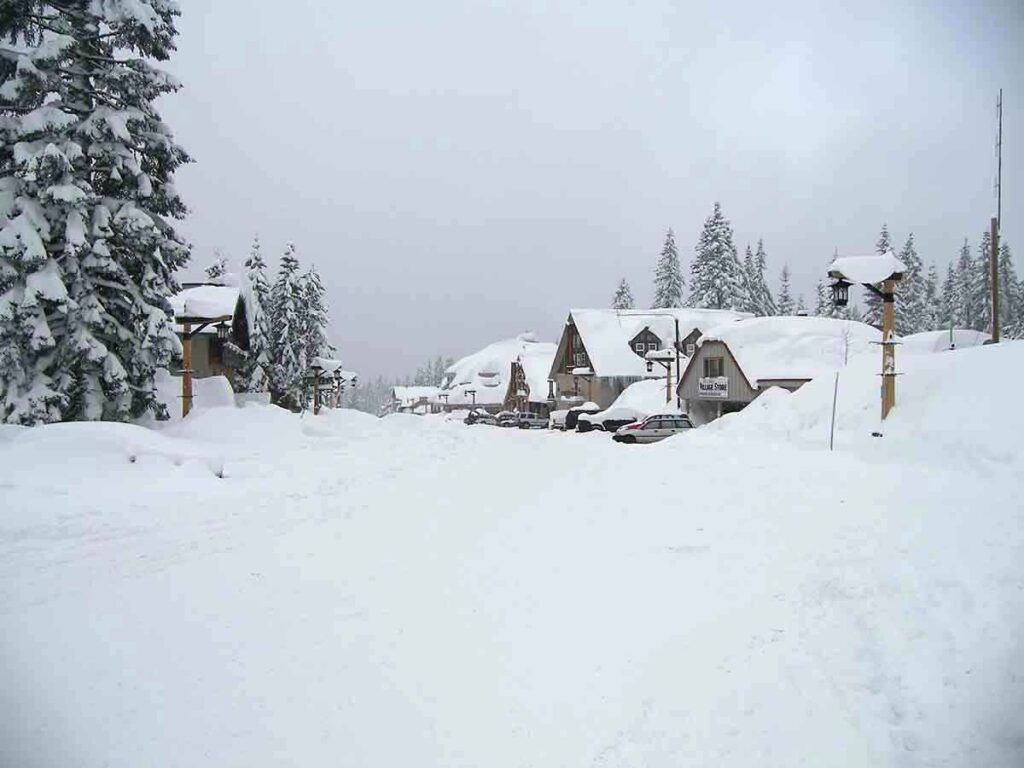
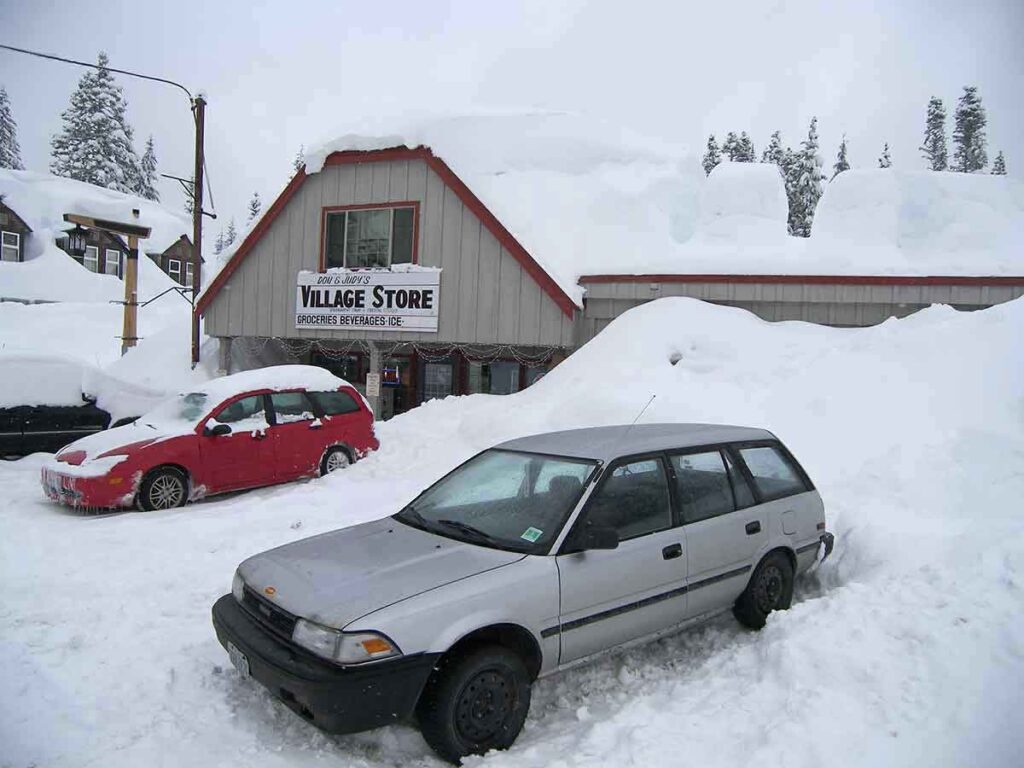
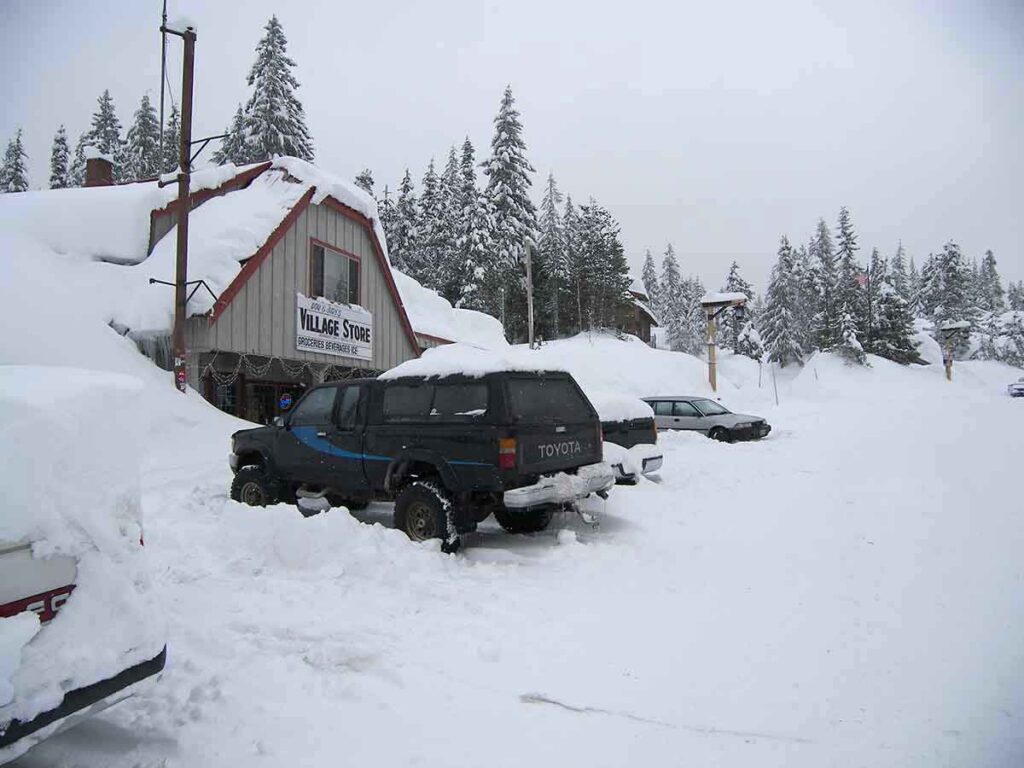
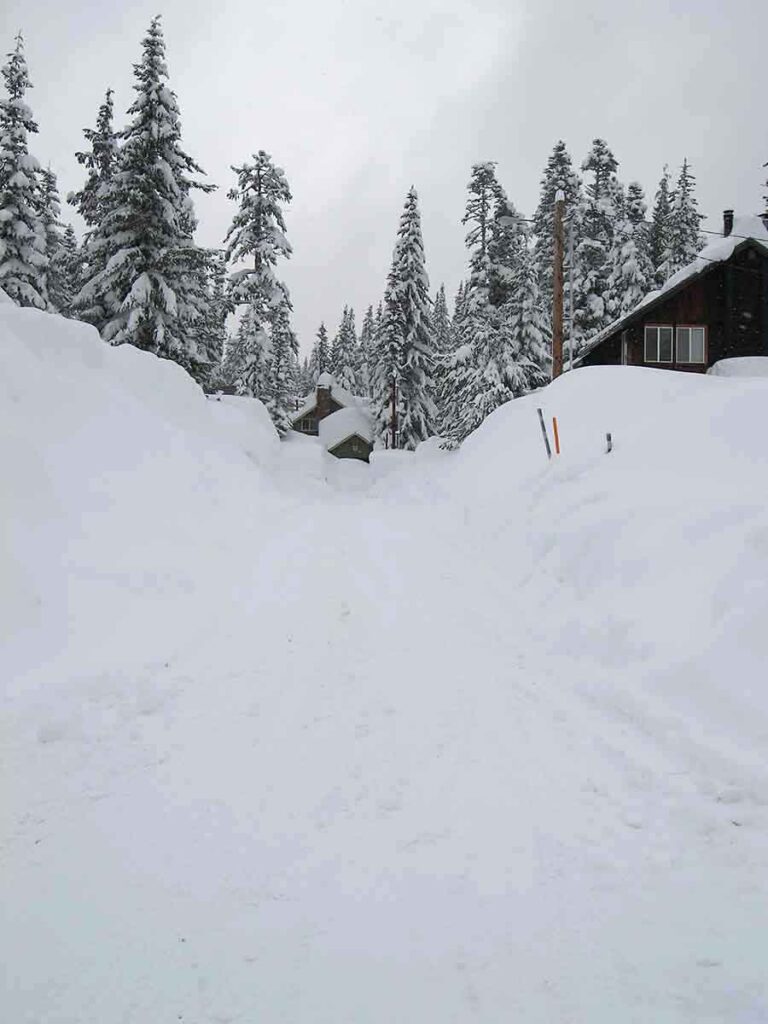

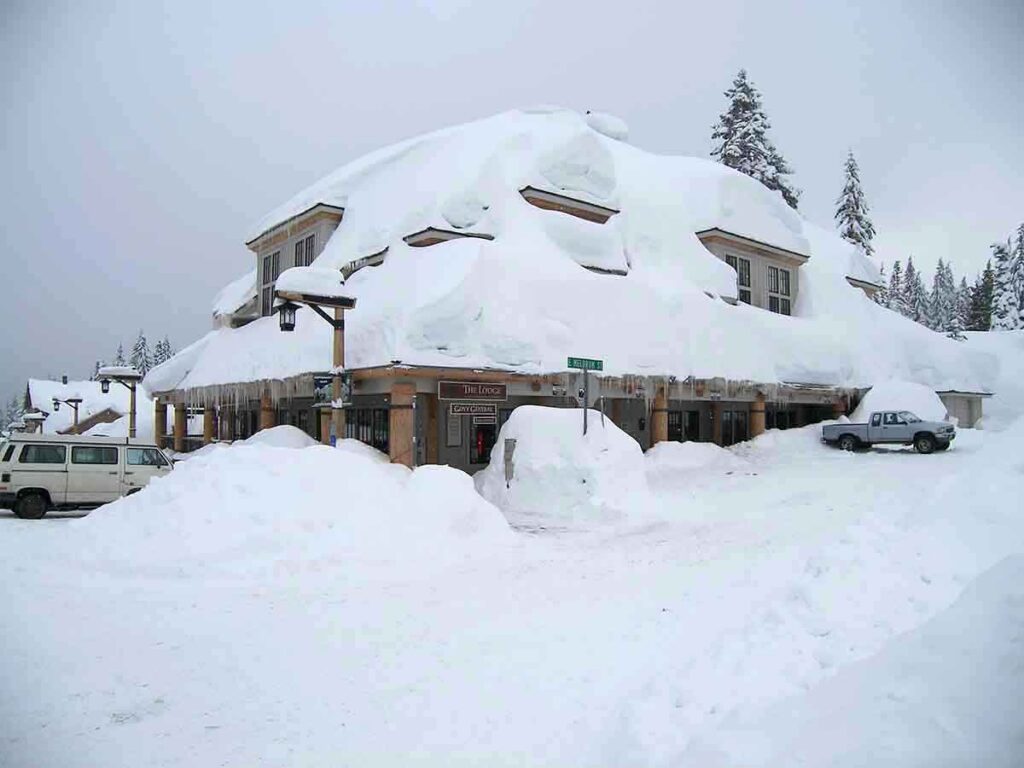
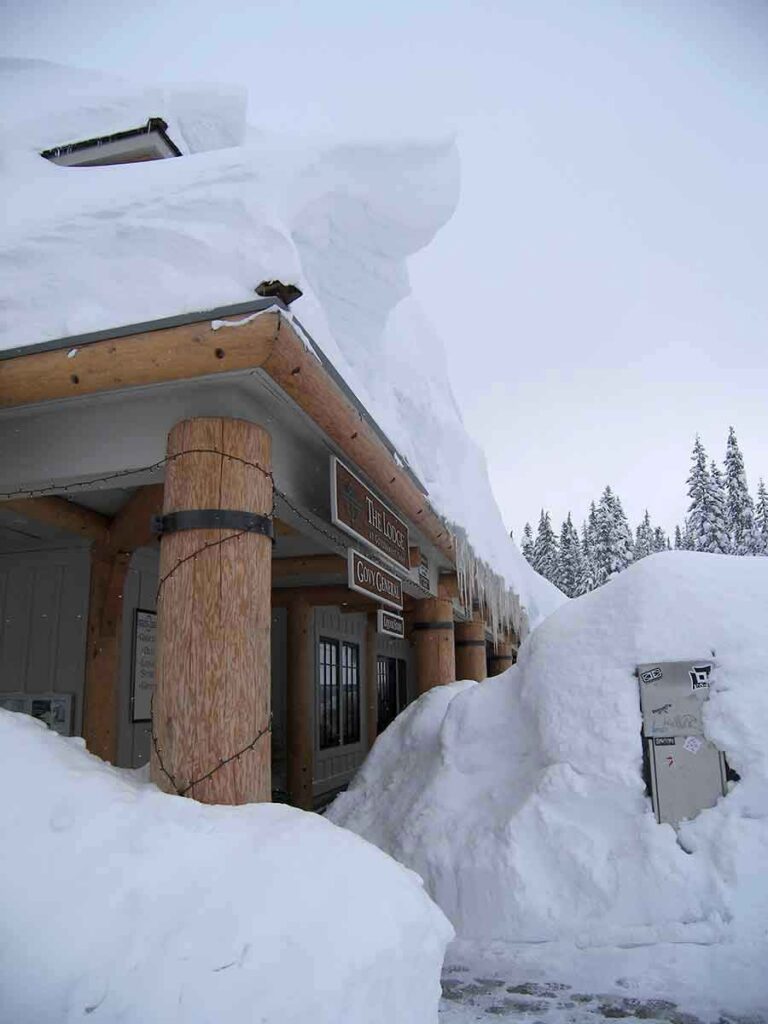

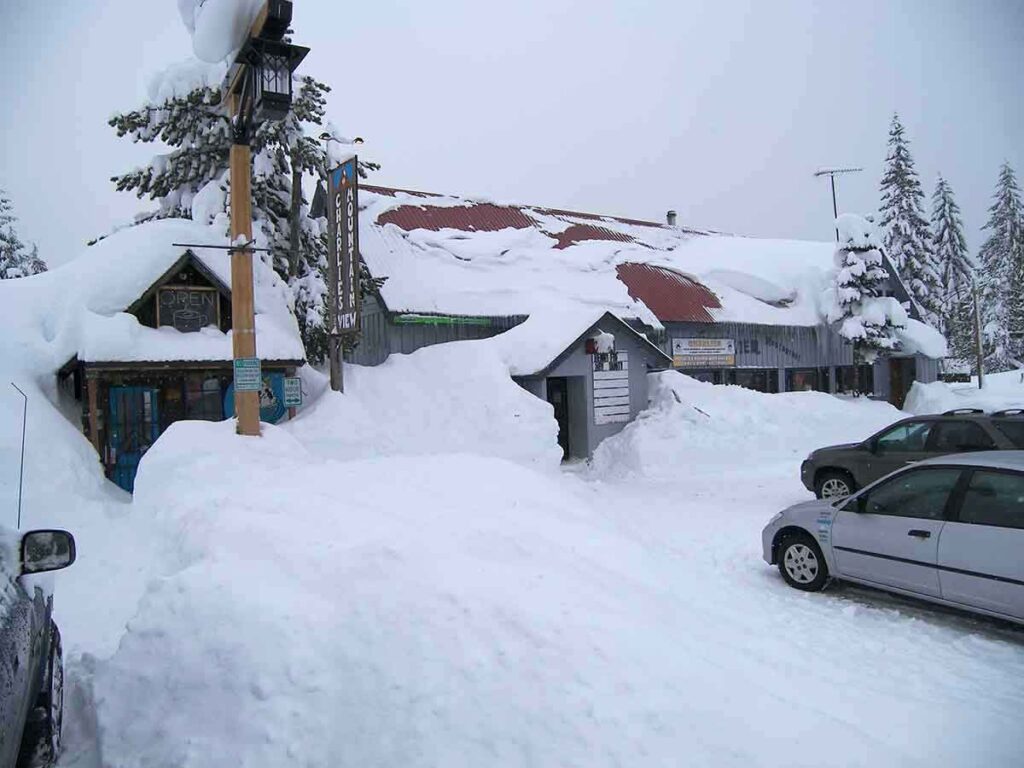
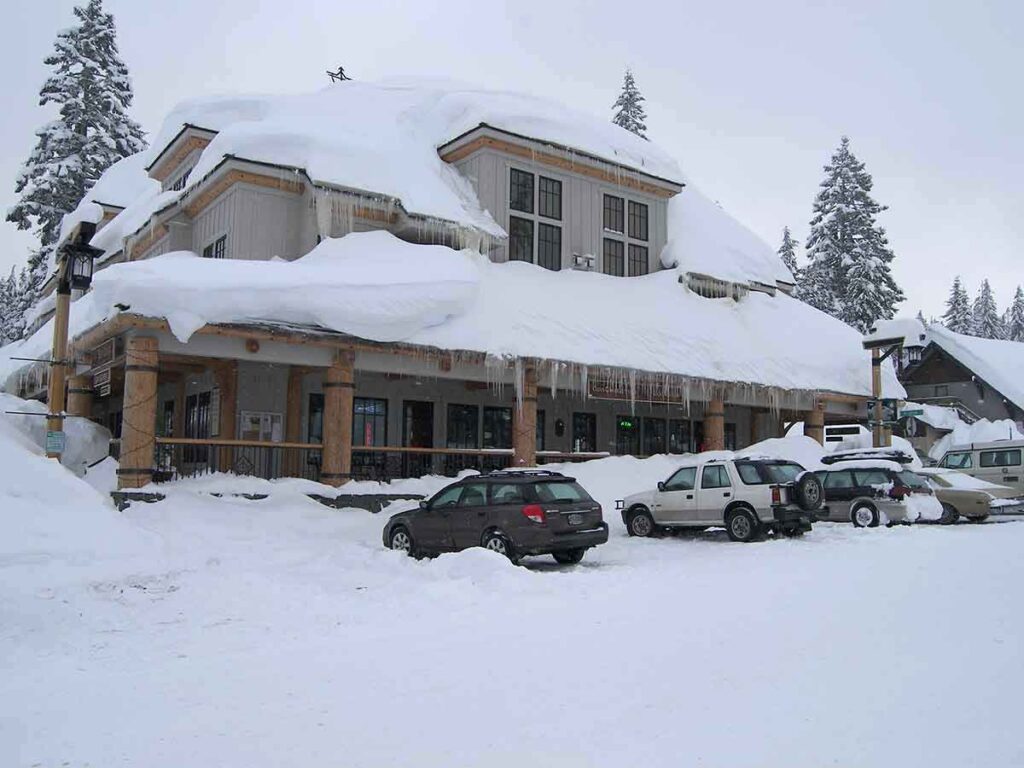
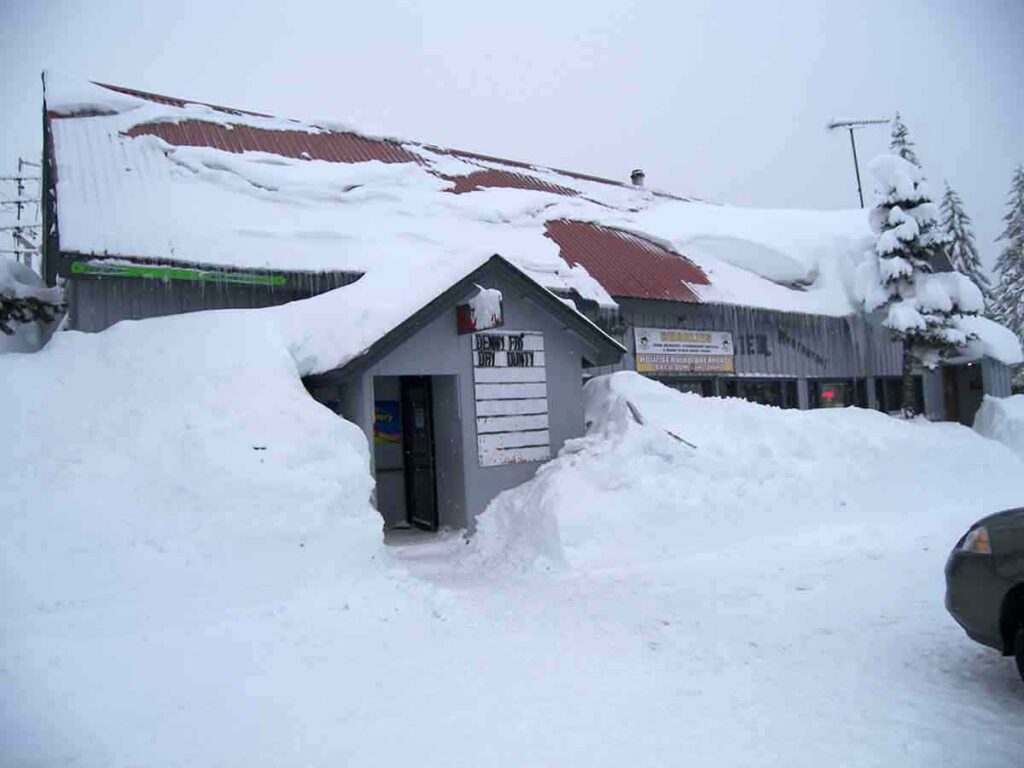
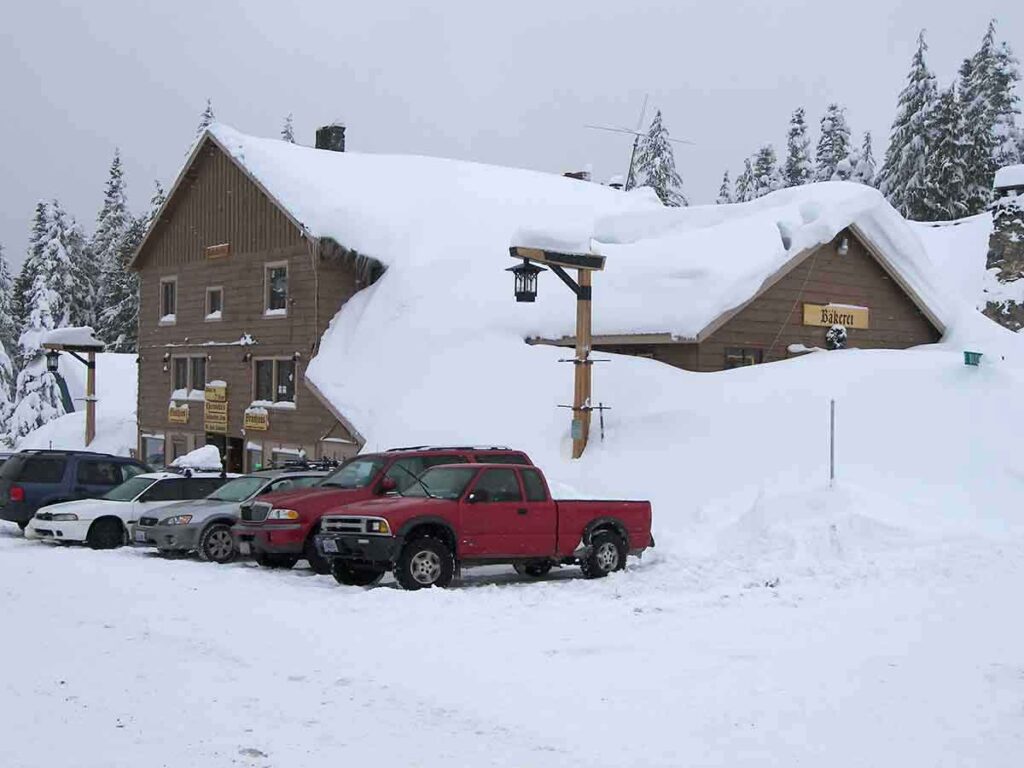
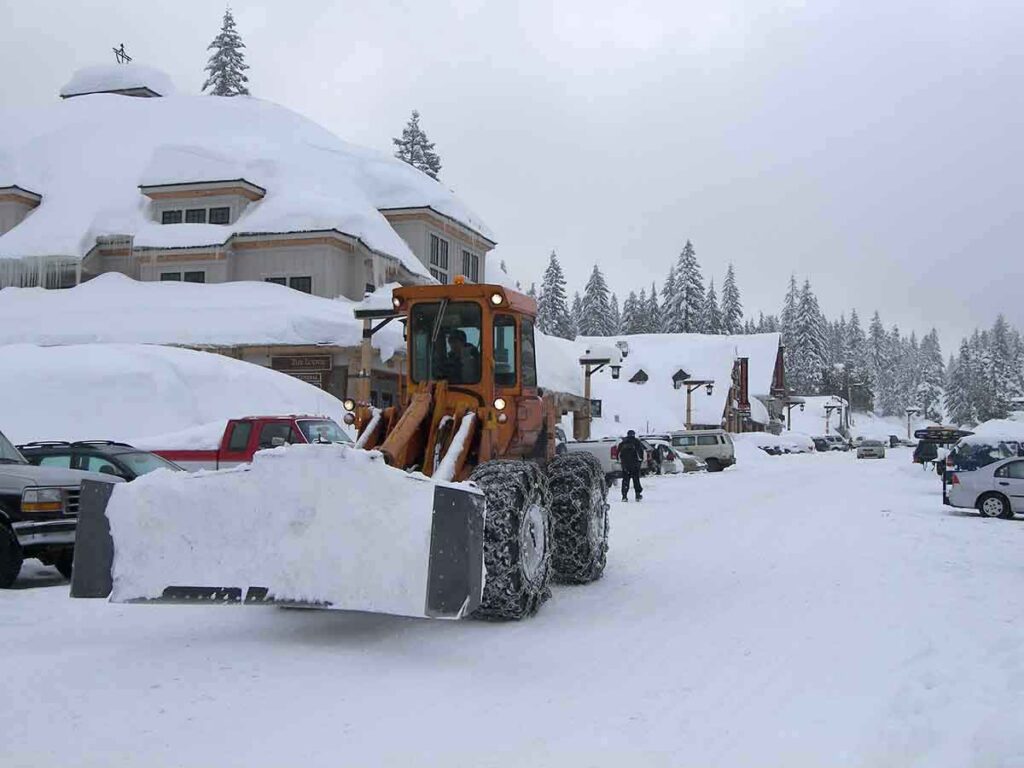
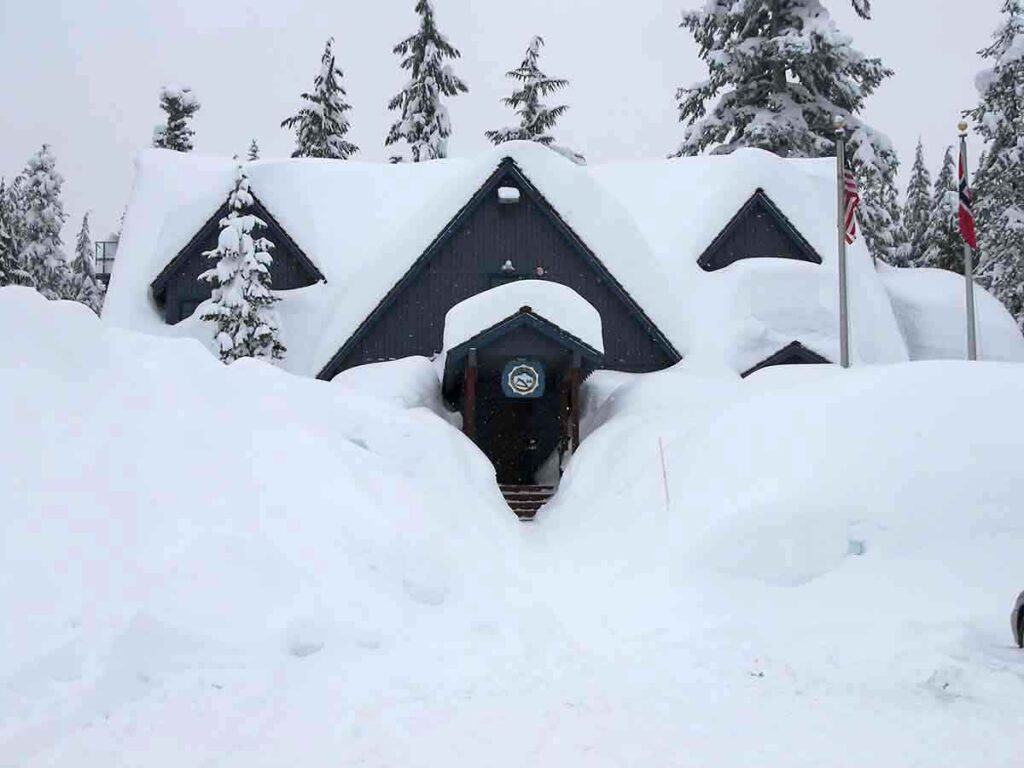
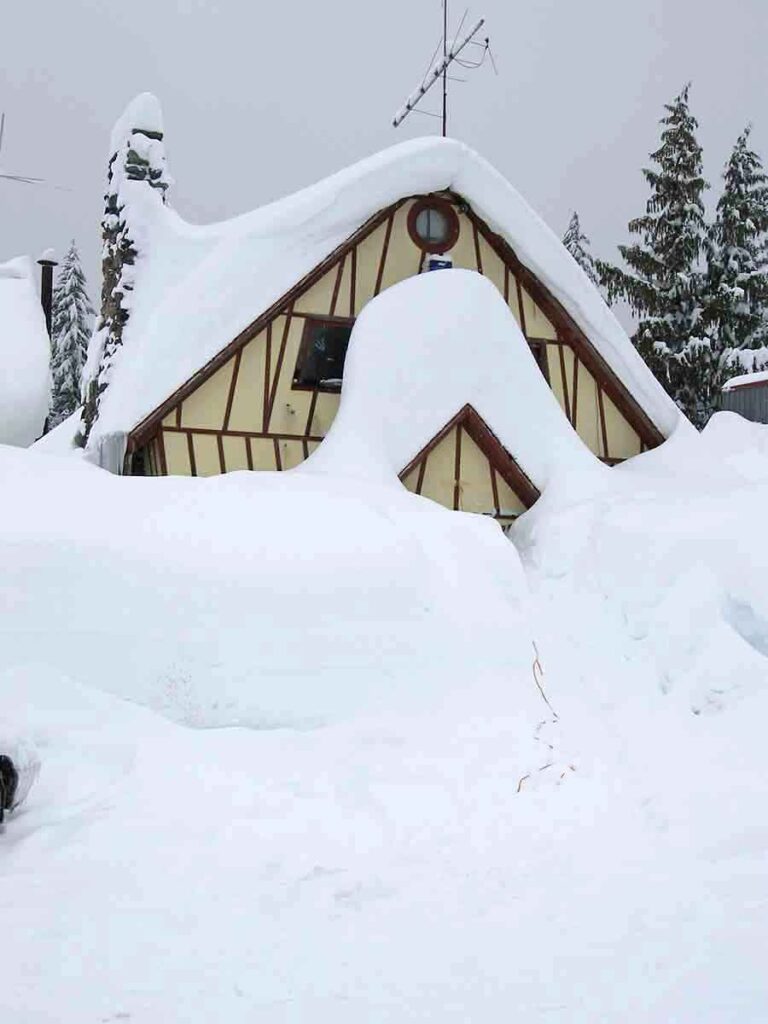
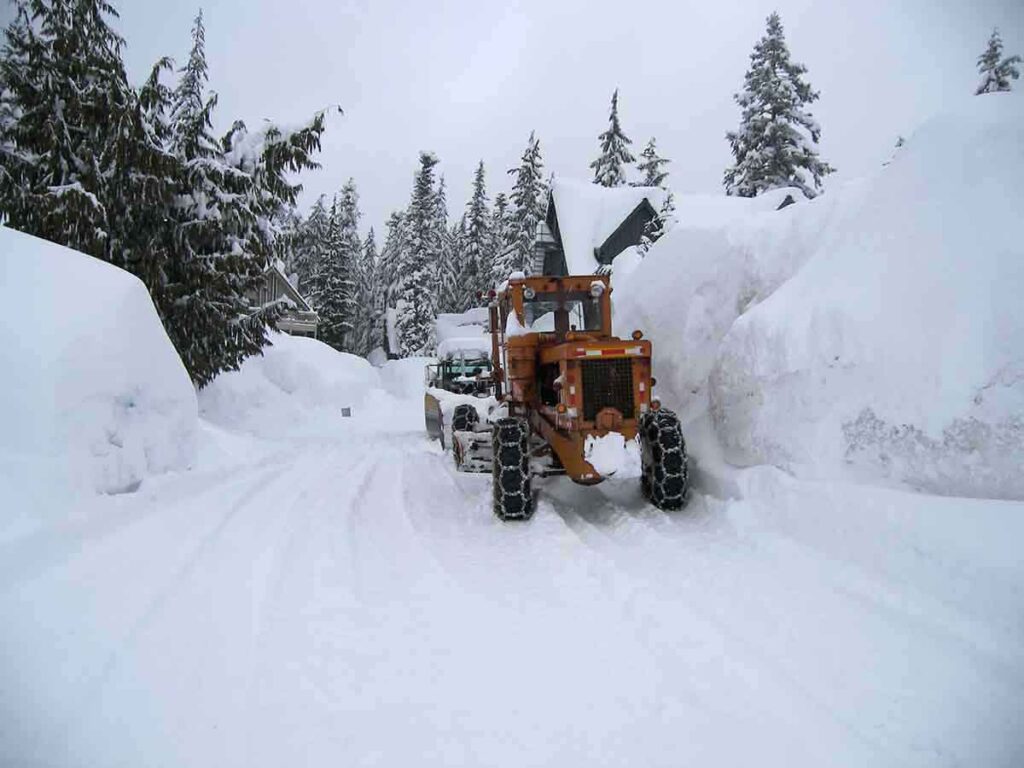
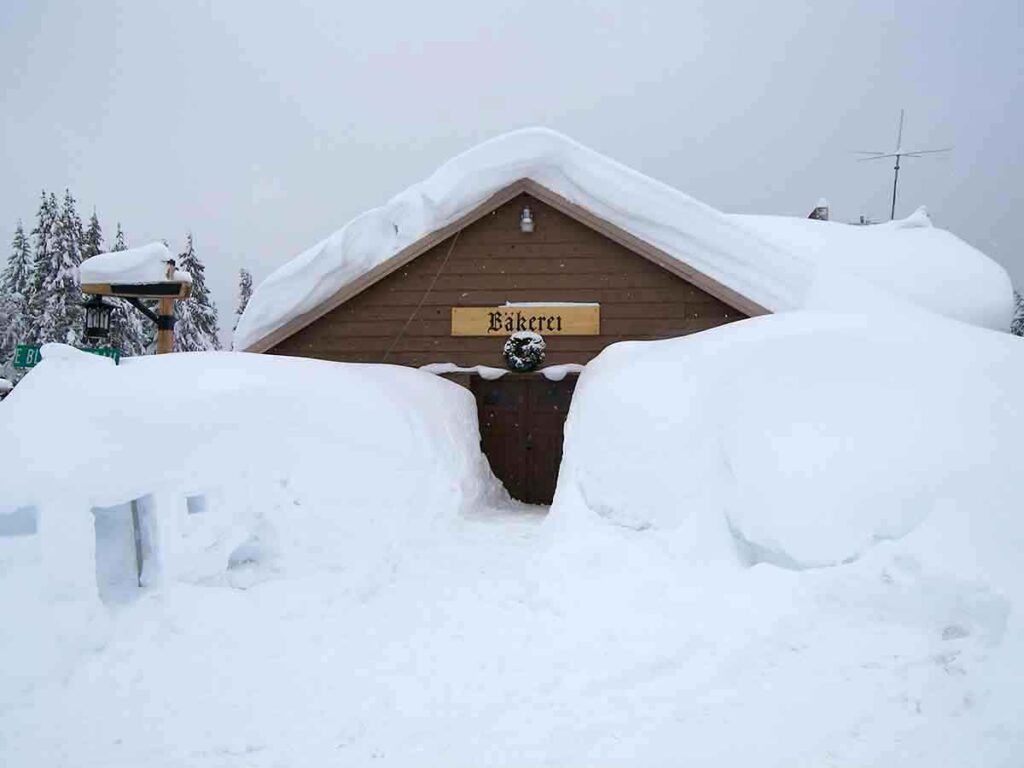

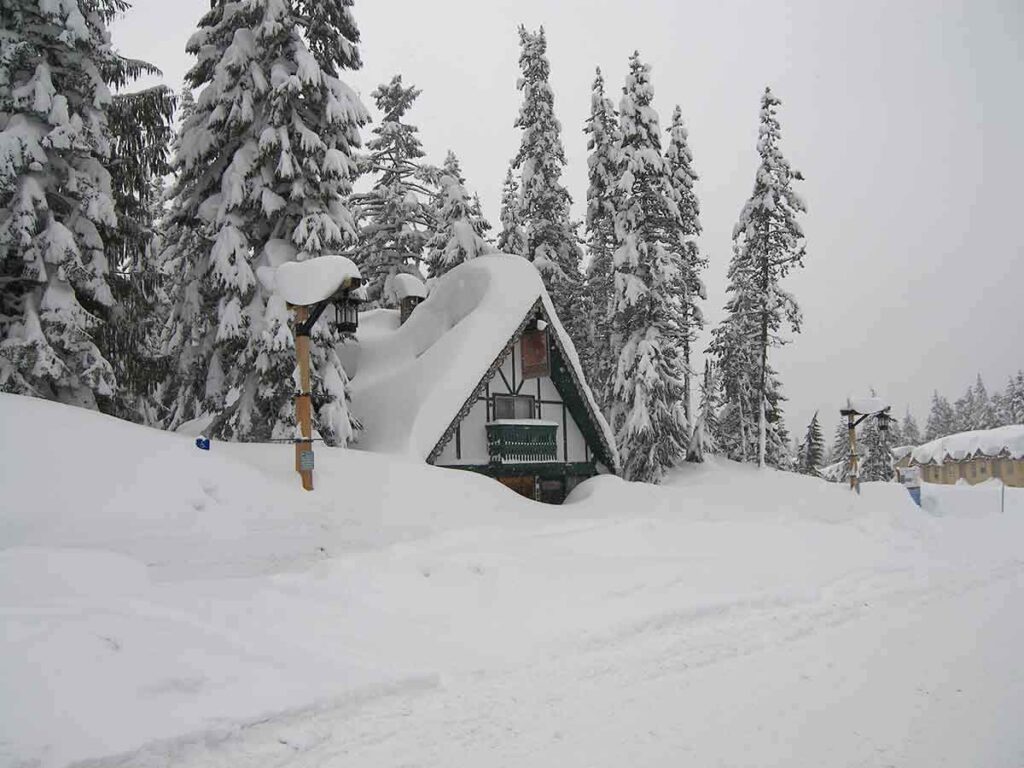
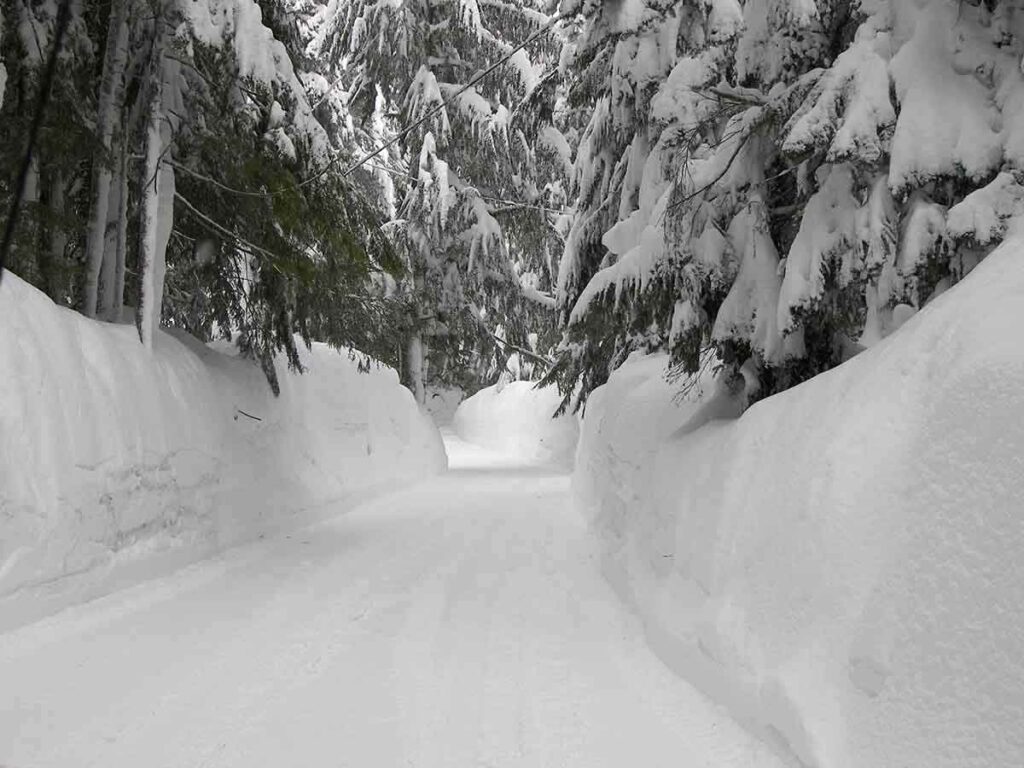
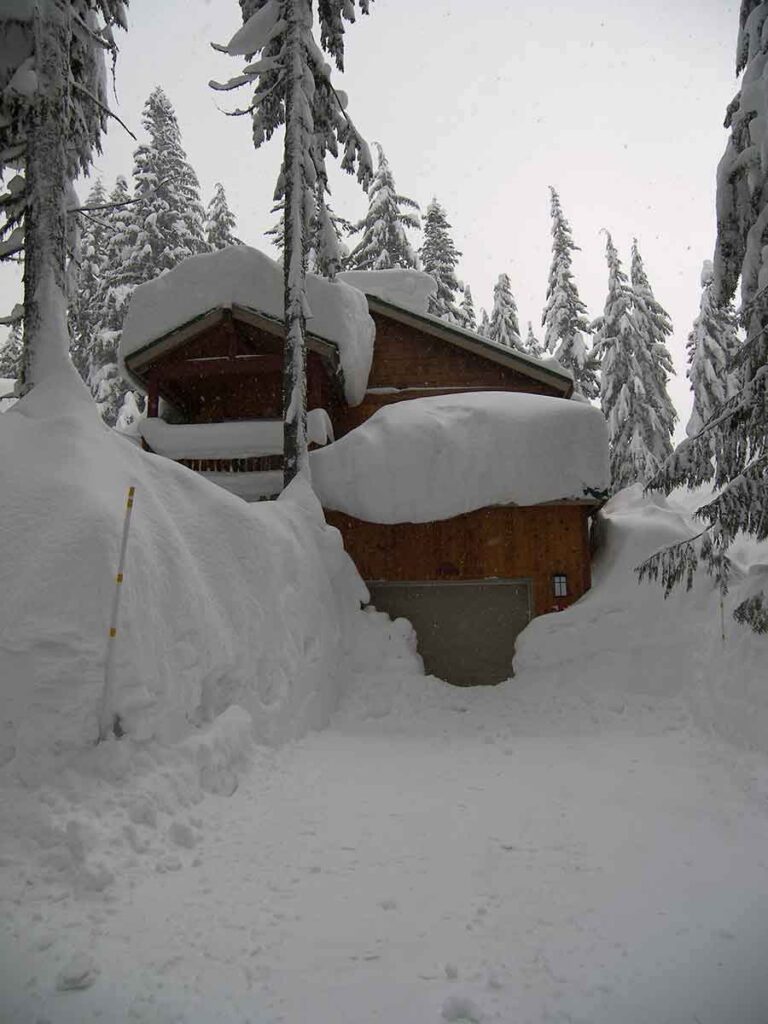
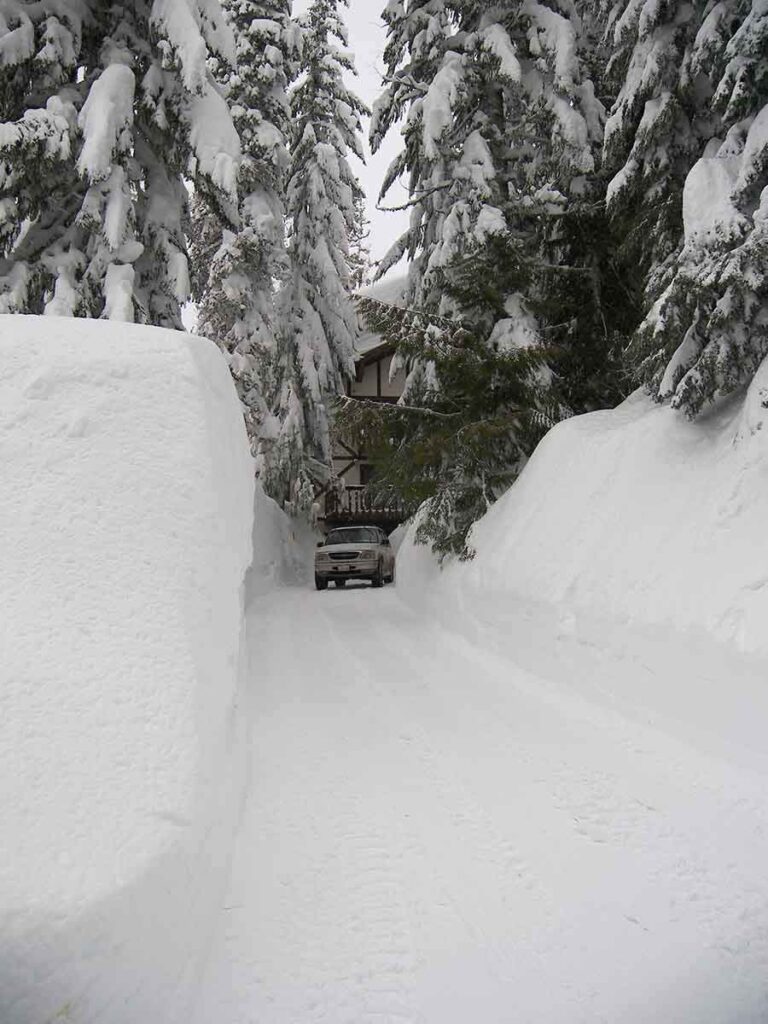
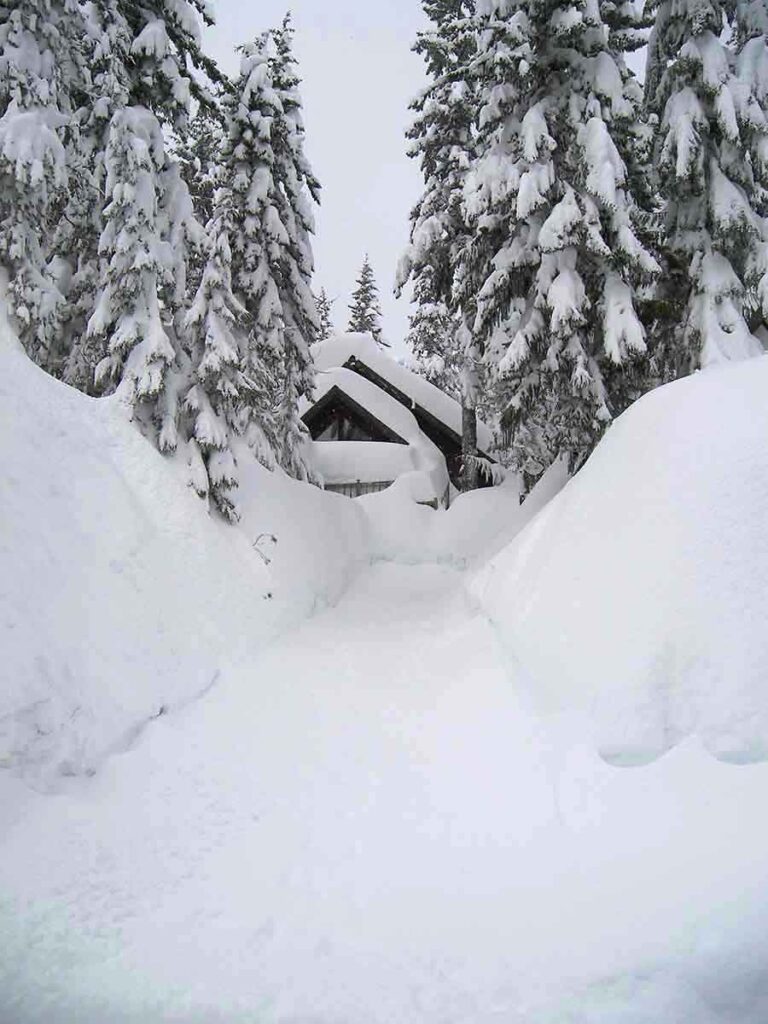
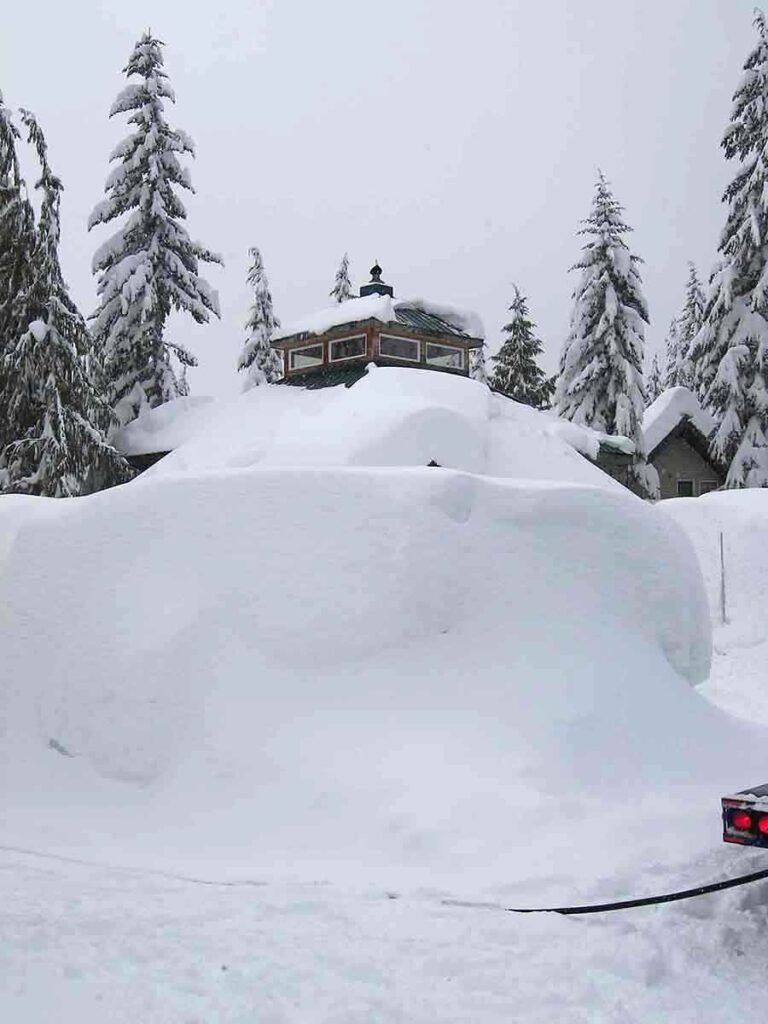
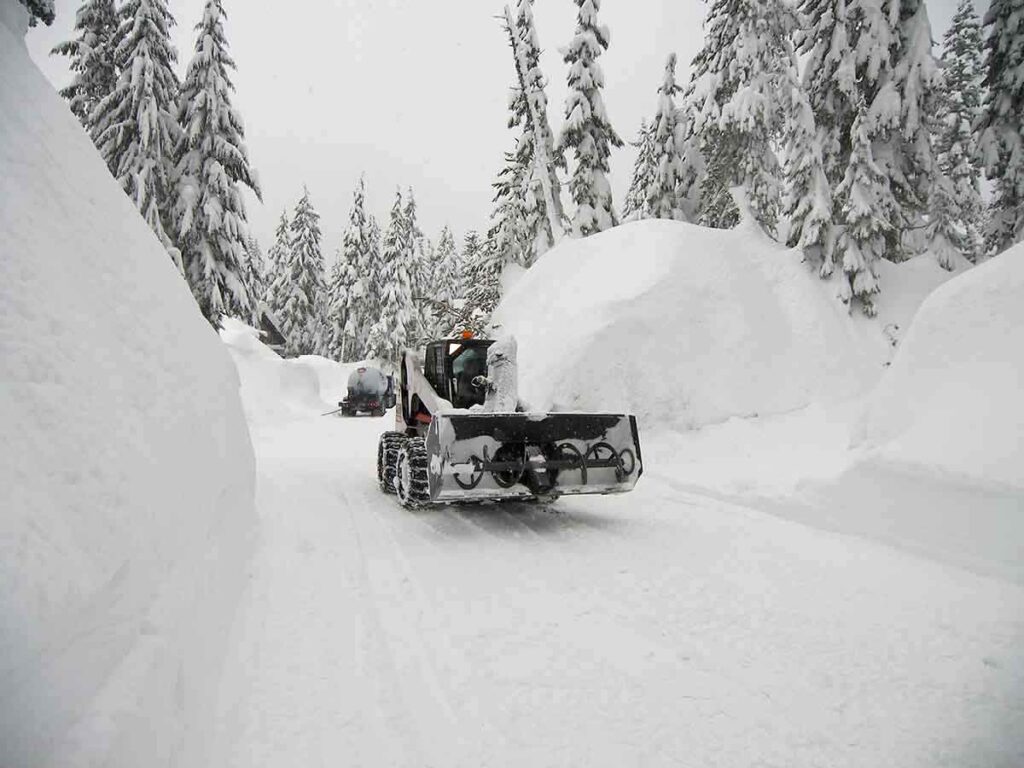
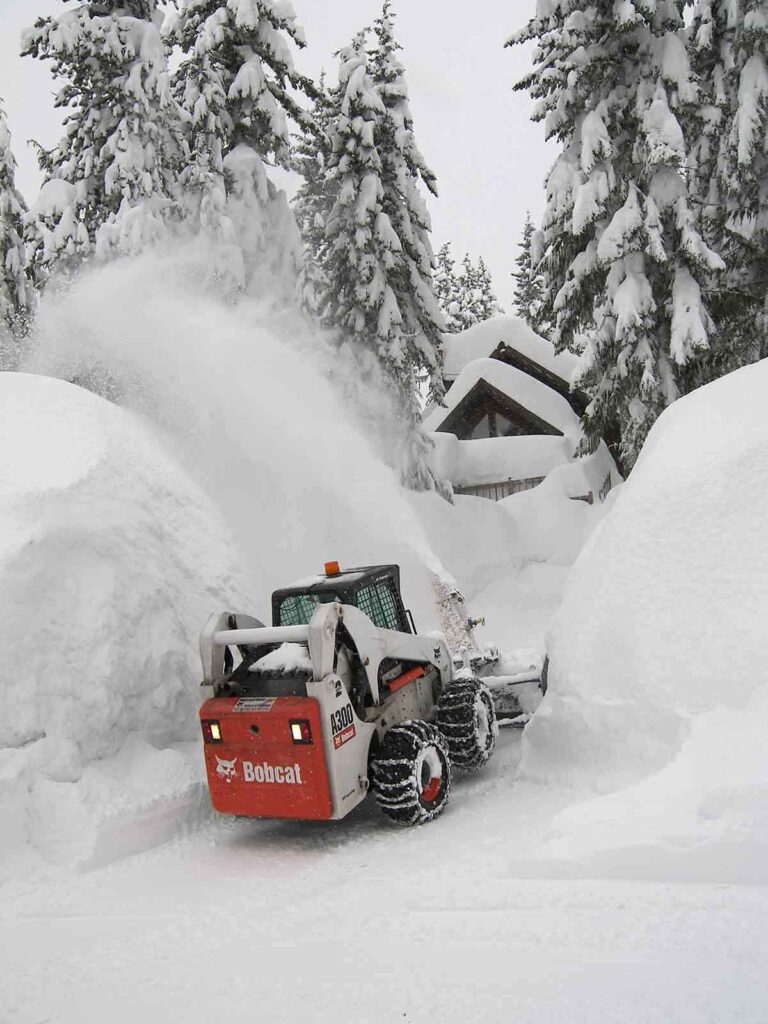
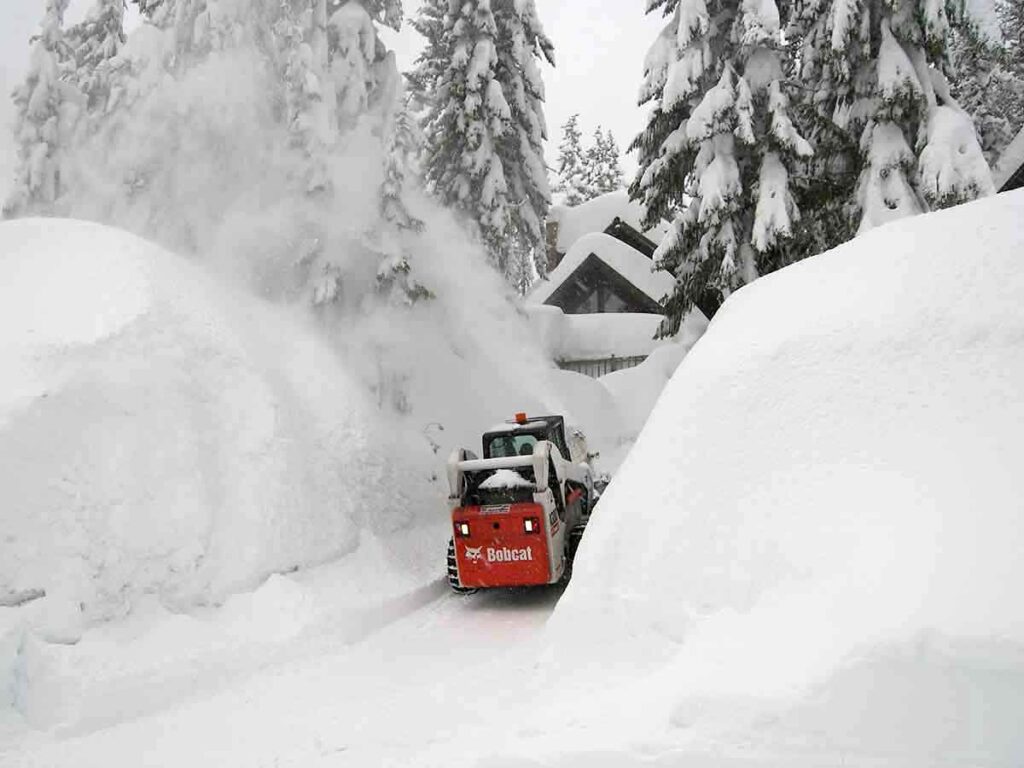
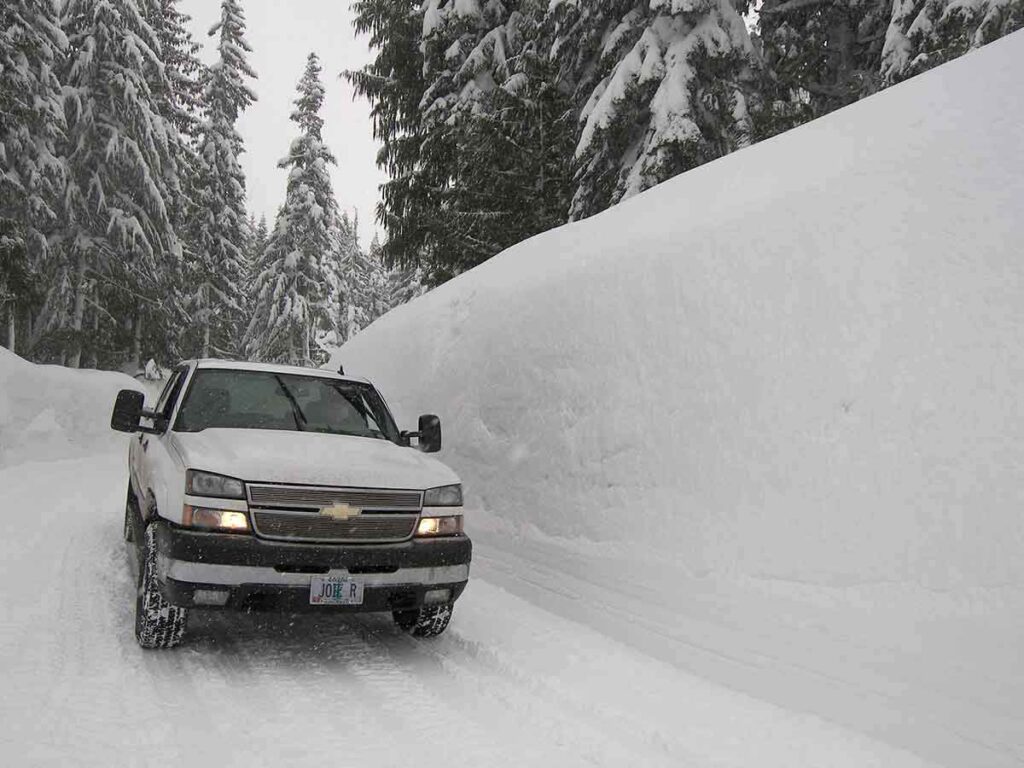
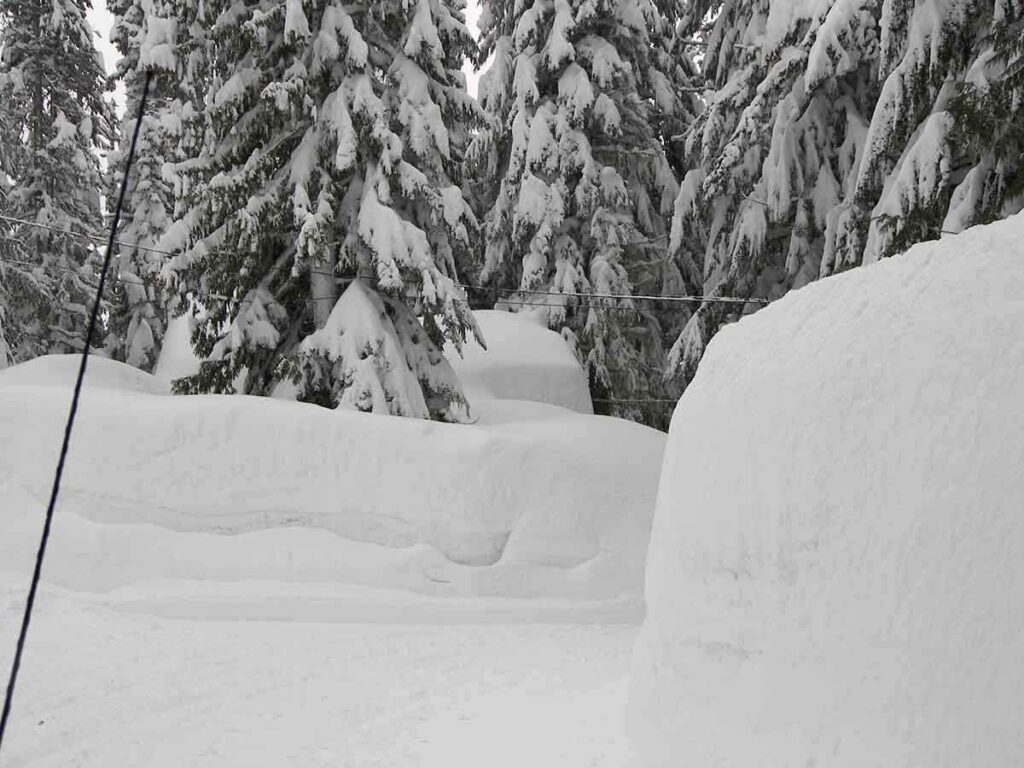

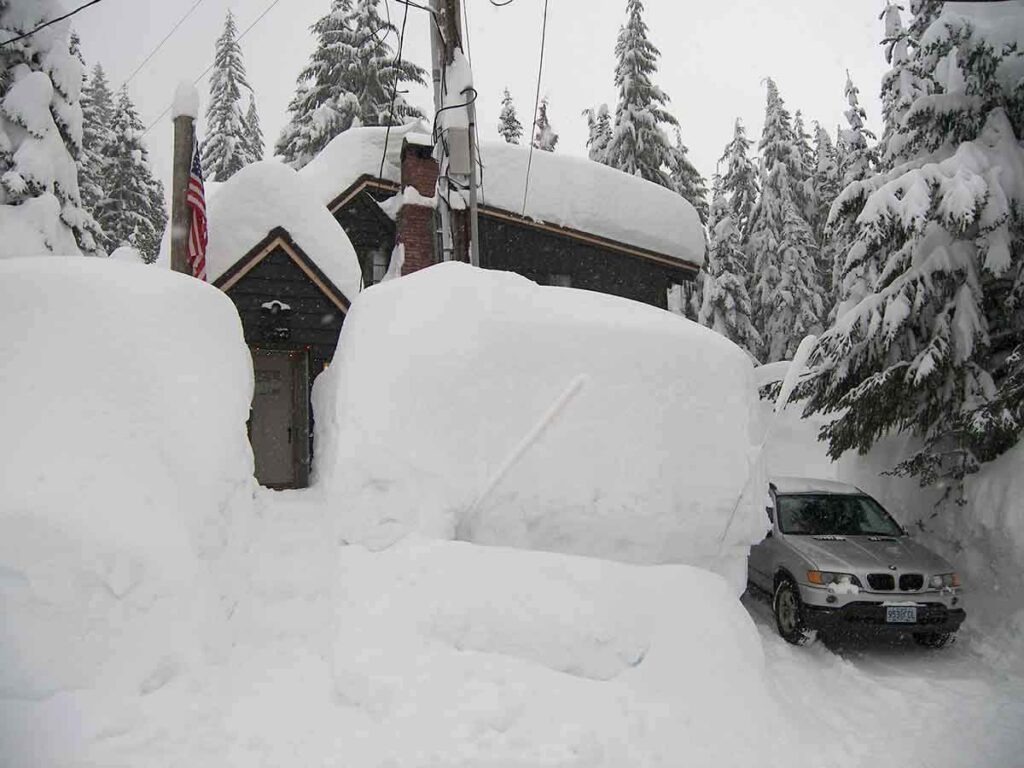
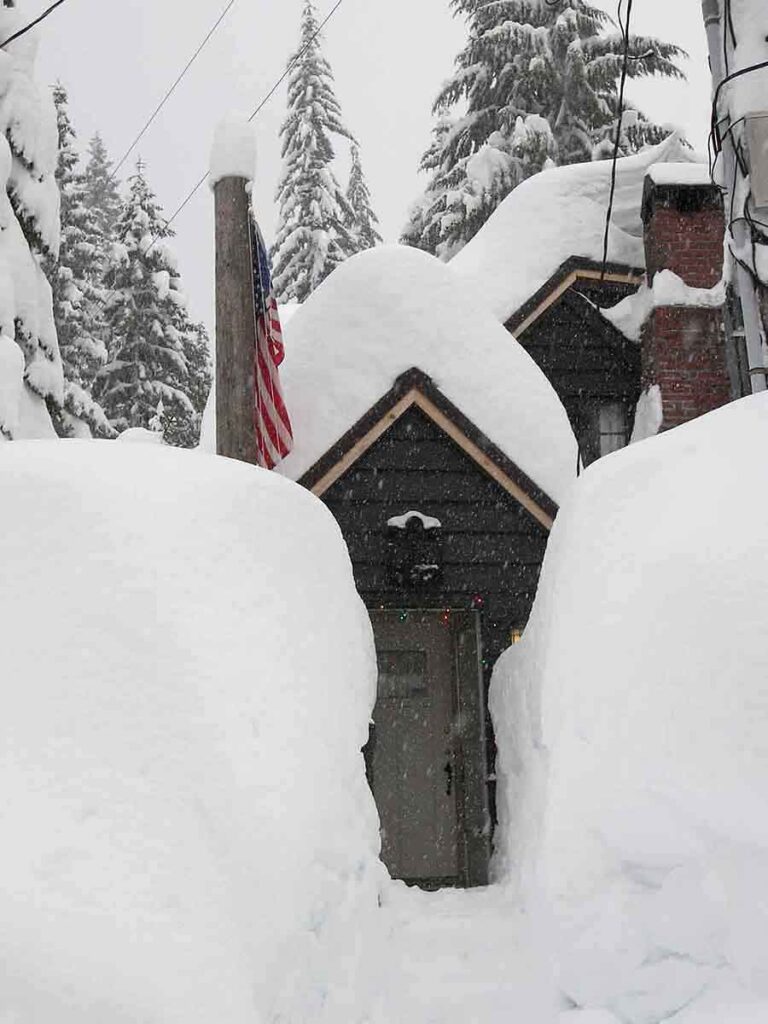
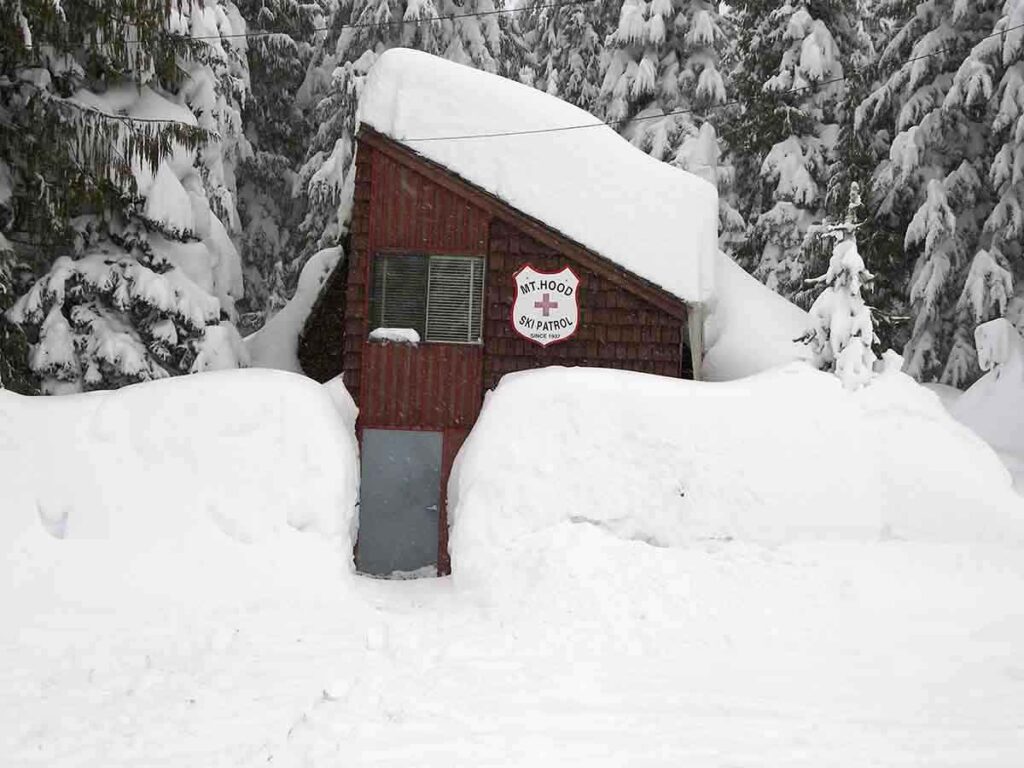
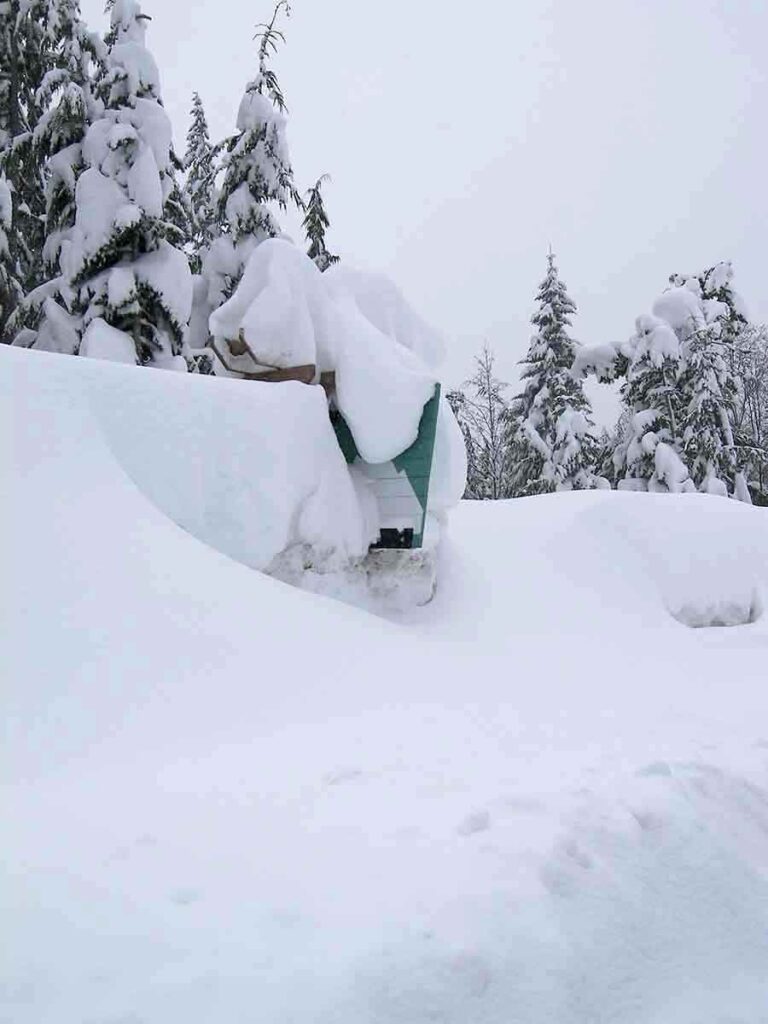
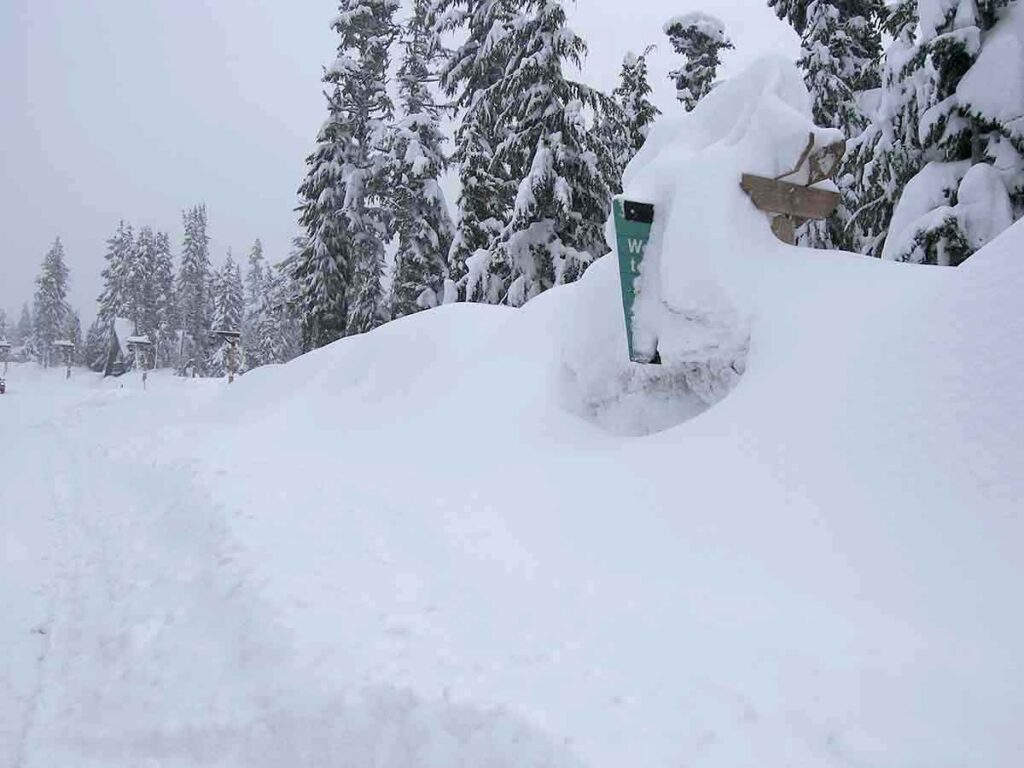
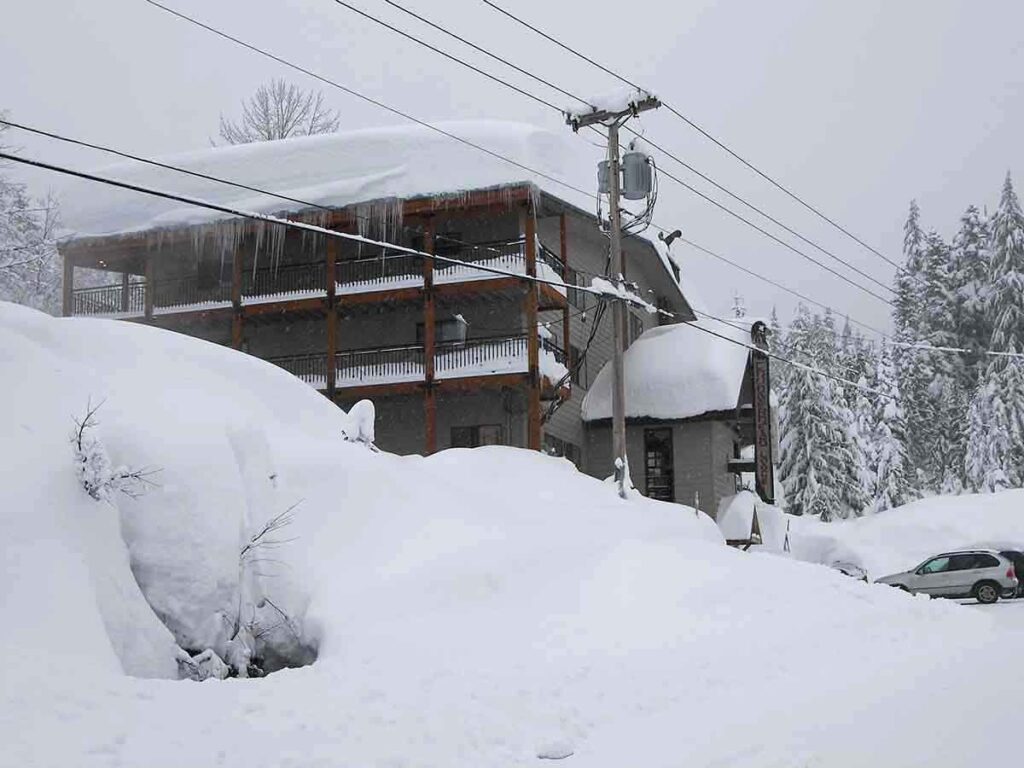
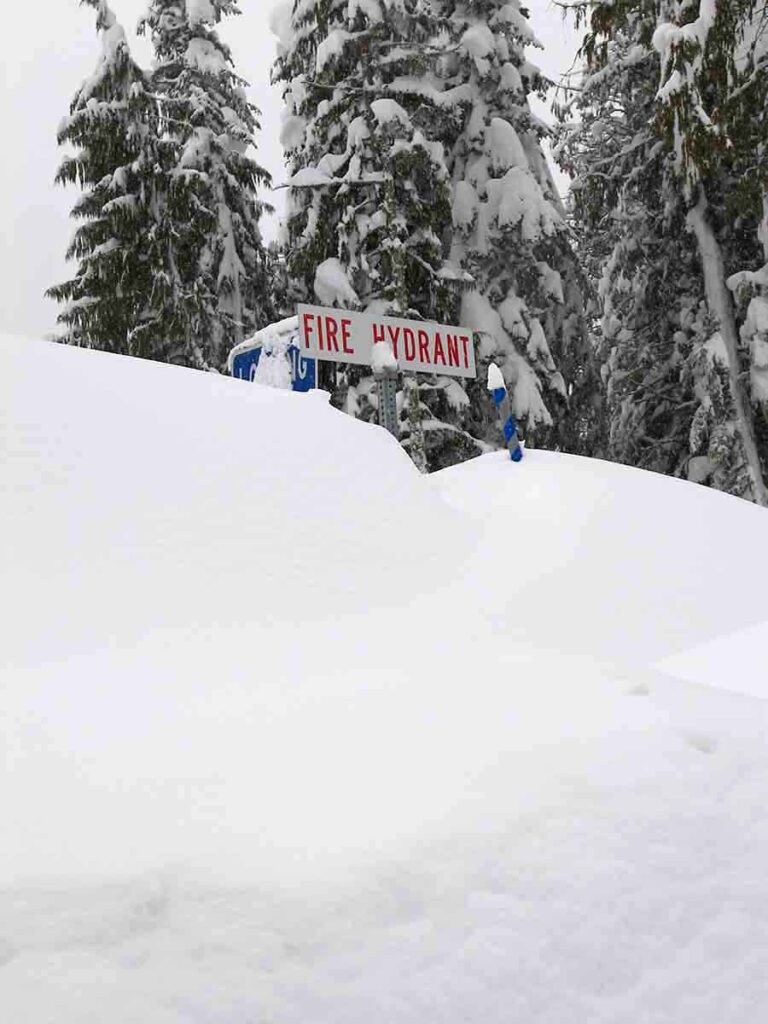
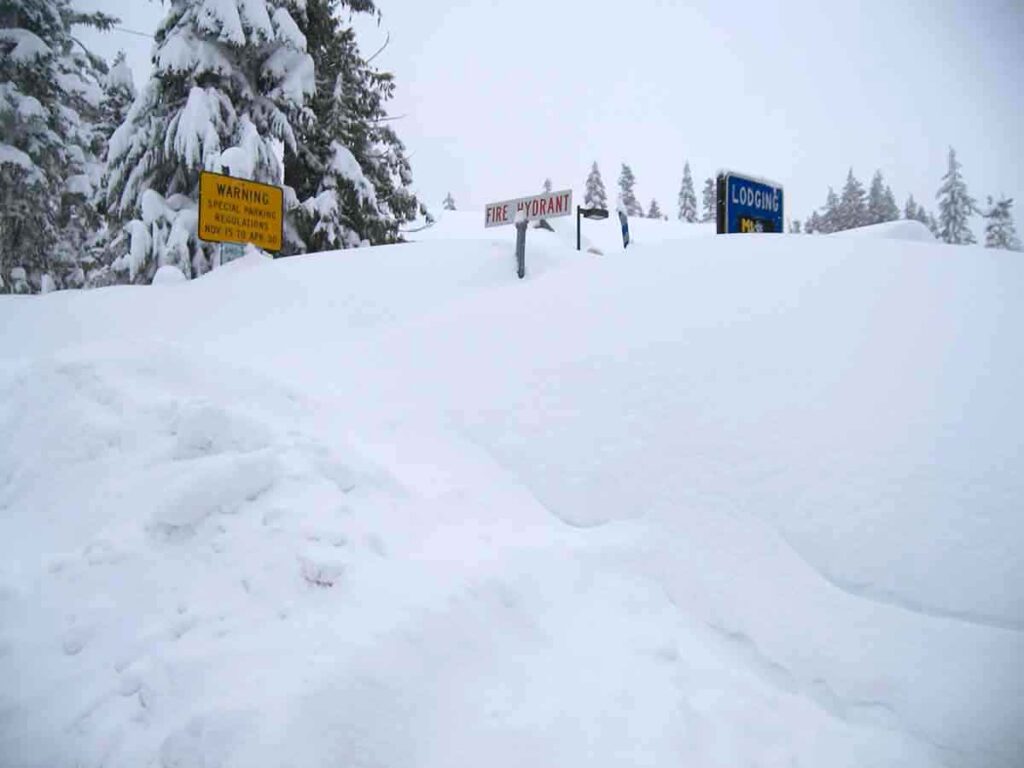
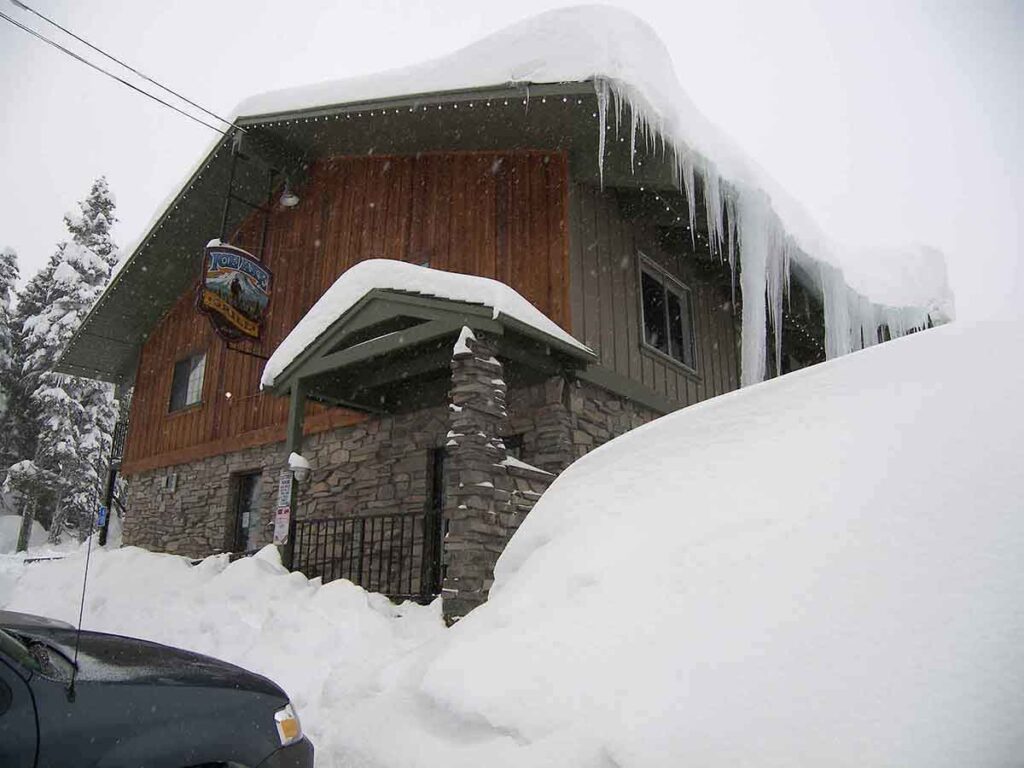
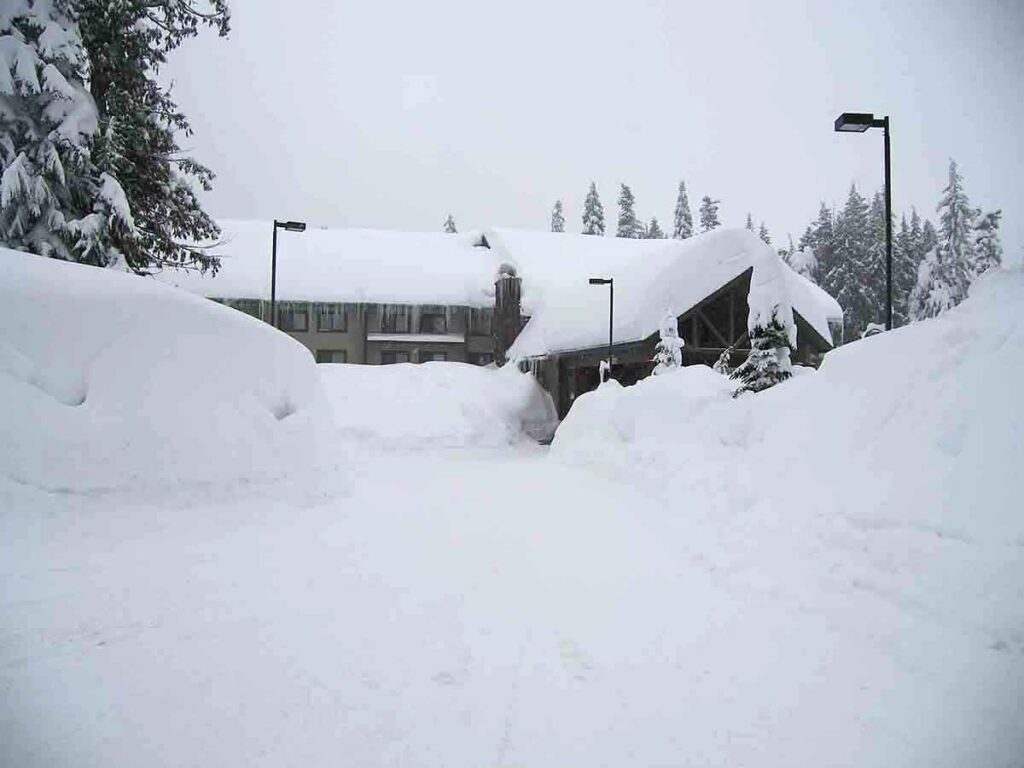
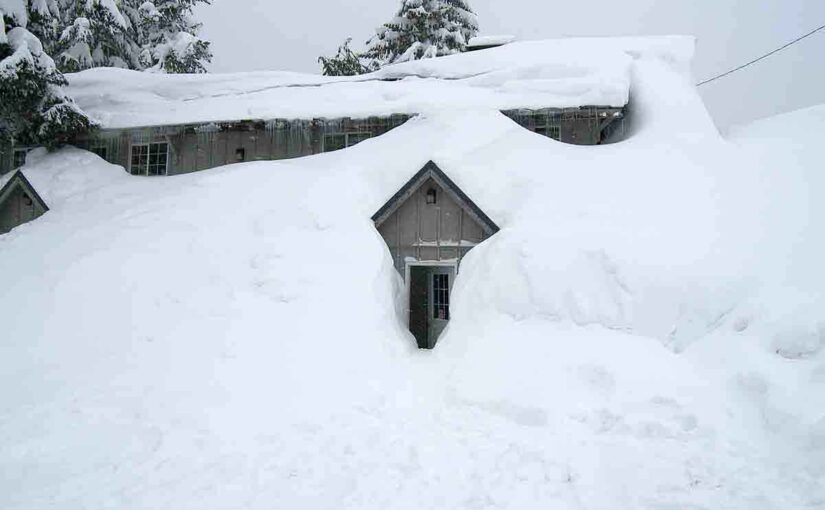
Mount Hood Snow – Government Camp, Oregon February 4, 2008




















































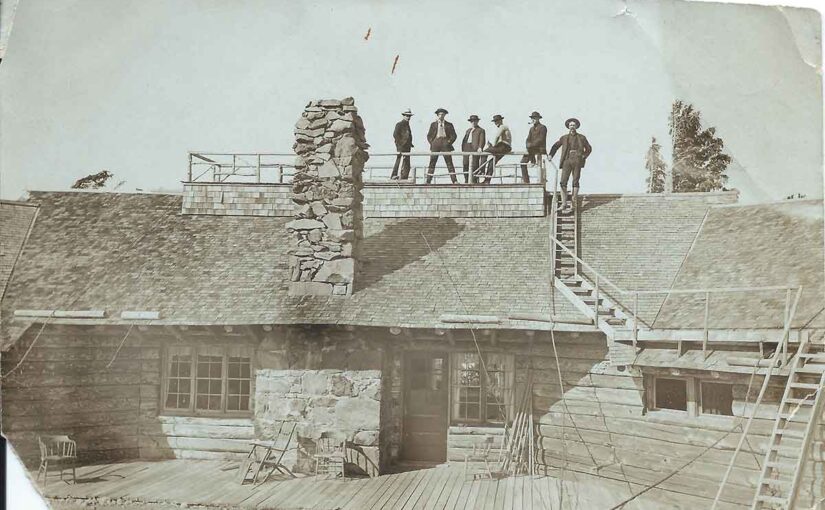
Cloud Cap Inn was built in 1889 and opened August 6th of the same year. It was built by William Ladd, a Portland banker and C.E.S. Wood a Portland attorney. It was Woods wife, Nannie, who named the hotel.
Prior to building the Inn they bought the road and created the Mt. Hood Stage Co. The road needed improvements before building could begin. Chinese laborers were employed in the project. A stretch of road referred to as “China Fill” was a 22-percent grade and was a challenge to the early automobiles attempting the trip. The original road didn’t follow today’s road. As you drive up to the Inn you can still see the old road intersect the new occasionally. It ran along the ridge between Evans Creek and Crystal Springs Creek.
The same architectural firm that designed Cloud Cap Inn designed the Forestry Building for the Lewis and Clark Exposition in Portland in 1905. All of the logs came from around the building site. Cables were used to hold the building down during high winds. Wind did end up blowing down one of the original chimneys in the early 1900’s. Water was supplied to the Inn from Tilly Jane Creek, 1200 feet away.
Business was slow in the beginning. The Inn closed down in 1890 and Ladd and Wood turned over operation of the Inn to James Langille’s wife, Sarah, nick named Tansana, in 1891. Sarah ran Cloud Cap at a much simpler level and was able to operate at a profit. Her two son’s Will and Doug worked at the Inn as mountain guides.
A tradition was started where when a person made a summit ascent they were allowed to take their personal business card and thumbtack it to the ceiling. This was done by putting the tack through the card and backing it up with a silver dollar and throwing it up to the ceiling.
In 1894 Ladd brought telephone wire and equipment to install a phone system at the Inn. Will Langille installed the equipment and ran the wire.
Will left Oregon to join the Alaskan gold rush. Doug stayed on as guide until 1900 when he joined the U.S. Geological Survey. Sarah’s nephew, Horace Mecklem came to help out after her son’s left. Sarah then hired two European guides until 1903. Mark Weygant went to work for Sarah in 1904 and worked for her for several years. Sarah retired from operating the Inn successfully in 1907 and turned operation over to Horace Mecklem and his wife Olive.
The first automobile driven to Cloud Cap arrived in 1907. It was a one cylinder Cadillac. After the trip Mecklem used a Pierce Arrow as a stage from Hood River to the Inn, but the auto could only go to the China Fill, but it cut down the time from Hood River from 8 hours to 3.
Dorsey Smith assumed the operation of the Inn around 1910(?). Homer Rogers, who ran a lodge in Parkdale, bought the Inn in 1919 from Ladd for $5,000. And a long-term contract from the Forest Service was made.
In 1925 the government was planning the Mount Hood Loop Highway and considering building a newer and bigger inn, similar to Rainier’s Paradise Hotel. They pressured Rodgers to make improvements to the road or lose his permit. Homer ended up selling the Inn to a group of people headed by J.C. Ainsworth. They hired Dorsey Smith to operate the Inn until a new one was built.
The plans for a new Grand Lodge didn’t bring the funds needed by private investors. Enthusiasm for the project was briefly renewed when the Mt. Hood committee came up with plans for a tramway to the summit of Mount Hood. But opposition from the Mazama climbing club and groups concerned with the environmental affects and safety killed that project too.
In 1927 Dorsey Smith turned the Inn’s operation over to Noyes Tyrell, who operated the very successful Tyrell’s Tavern near Bonneville. He ran it until 1932 when it stood empty for about a year.
Boyd French Sr. leased it around 1934 until the war caused it to close its operation. The Mt. Hood Road and Wagon Company sold the Inn in 1942 to the Forest Service for $2,000. Dorsey Smith was the representative in the transaction, ending his long association with Cloud Cap. Boyd Smith used the Inn as a part time residence until after the war. Attempts to operate the Inn failed after that and in 1950 the Forest Service was considering tearing down the Inn, as it had fallen into disrepair.
The Crag Rats, a Hood River based climbing club, after a struggle with the government, secured permission to use the Inn as a clubhouse and a base for their snow surveys. The Crag Rats went to work repairing the old building and
maintain it to this day. In 1974 Cloud Cap Inn and Vista House were placed, by the state, on the list of historic places.
Cloud Cap Inn is accessible by car via a rough dirt road when it’s not closed due to snow. Hiking trails and camping are available in the area as well as majestic views of Mount Hood from the timber line at 6000′, the same elevation as Timberline Lodge on the opposite side of the mountain.

Here’s a great early view of the old Welches Ranch at Welches Oregon.
This view is after Sam had gone. You can see the store, post office, the dance hall and the white canvas tourist tents lined up along the road to the left of the Welch home. Billy’s cow pasture, which is now the golf course at the resort, is at the left side while his orchard can be seen on the right side of the photo.
When this photo was taken there was only a sign out at the Barlow Road, where the modern shopping center is presently located, directing people to turn south and drive to Welches Ranch one mile away.
Snowplow on Mt Hood Loop Highway circa 1950-ish. The winters of 1949-1951 were big snow season’s on Mount Hood.
This scene is most likely on the road to Timberline Lodge.
Here’s a great story from 1958 about driving through Oregon’s Lolo Pass Road back when it first opened. It tells about how, after it was determined that the area was not a part of the Bull Run Lake watershed, the road was built in 1955 opened to the public from Spring until Fall for fantastic views of Mount Hood’s west side.
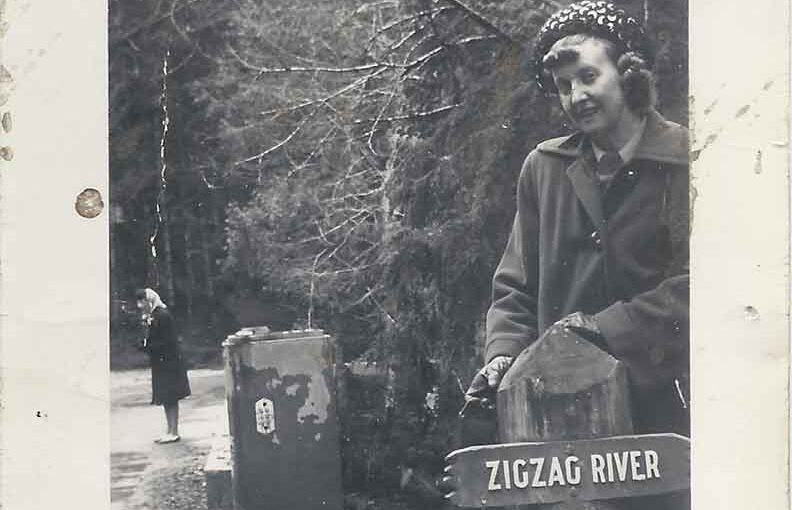
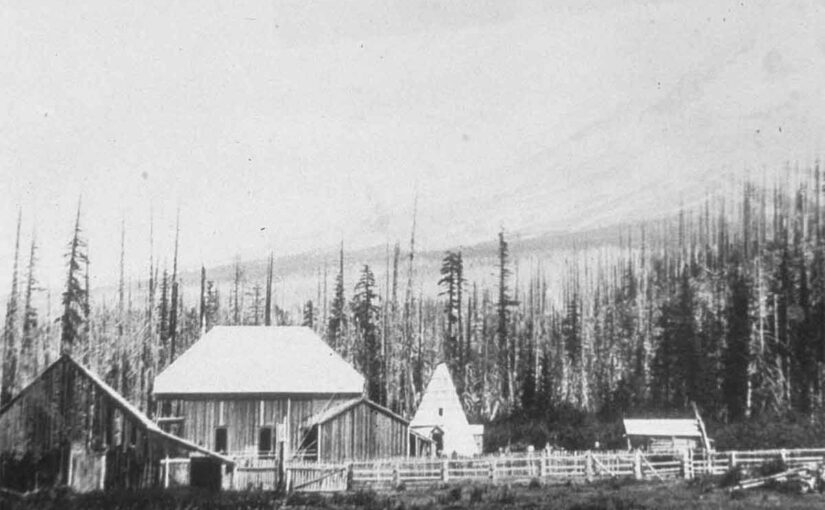
When people think of Mount Hood, crime usually isn’t the first thing that comes to mind. Especially not murder. Yet, one story from Mount Hood’s past should be told—the mountain’s first recorded murder. This is the story of the first Murder on Mount Hood.
For about 40 years, the Oregon Trail carried settlers west, and became the main route into the Willamette Valley. Samuel Barlow and Joel Palmer blazed the trail over the south shoulder of Mount Hood. Soon after Barlow made the trail a toll road. Tollgates were placed along the route to collect fees from travelers. One tollgate keeper, Perry Vickers, became an integral figure in the history of Mount Hood.
Perry Vickers was among the first residents on the south side of Mount Hood, an area that today includes the small ski town of Government Camp. He was well liked by everyone, especially those passing over the Barlow Road in their wagons.
He secured squatter’s rights at Summit Meadow, a natural clearing at the top of the pass, in 1865. Here, the road began its descent down the west slope of Mount Hood, leading settlers on the final stretch toward the Willamette Valley. Vickers built the first accommodations in the area, including a lodge, store, barns, and a corralled field for livestock.
During his time on Mount Hood, Portland grew rapidly with the influx of new settlers. Many of these settlers returned to the mountain, over the road that had once challenged their or their parent’s journey, seeking recreation and adventure.
Vickers became Mount Hood’s first climbing guide. Hiking and climbing the peak became increasingly popular at the end of the 19th and early 20th centuries. He enthusiastically promoted visitation and recreation. Vickers even created a tradition of lighting the mountain by carrying fuel for a large fire near what is now known as Illumination Rock. He is credited with being the first person to spend a night atop Mount Hood.
In August 1873, Vickers survived a night on the summit by building a crude rock shelter. Later, he recalled, “I dared not sleep, lest the cold take me. At dawn, I beheld a glory of light such as mortal eyes rarely see.”
Vickers was known as a dreamer and a poet. Newspapers later referred to him as “the mountain’s first true romantic.” The Oregon Historical Society preserves some of his verses about sunrises over the Cascade peaks and sunsets glowing across the summit.
However, his start in Oregon wasn’t on solid footing.
In 1865, Vickers arrived in Vancouver, Washington. While looking for work, he fell in with three other young strangers. Unfortunately, they were soon arrested at Fort Vancouver for horse theft, a serious crime at the time.
They were held for about two months awaiting trial. Each prisoner wore an “Oregon Boot,” a seven-pound iron clevis attached to the ankle to prevent escape. Public sympathy grew for Vickers, who consistently protested his innocence.

Worried that guilt by association would seal his fate, Vickers planned an escape. Their wooden cell allowed them to pry loose several 2″x4″ window bars, and the group fled into the night.
Once free, Vickers separated from his companions. Pursuers closed in as he reached the Columbia River. His ankle was chafed and bleeding from the iron shackle. In desperation, he plunged into the mile-wide, fast-moving river.
Miraculously, he swam across with the seven-pound clevis still attached to his ankle.
On the far bank, Vickers found a farm where he pried off the iron using a wagon wheel wrench and a bolt. The next morning, woodcutters gave him food and directed him to Powell Valley, where his brother lived. His brother provided clothes and supplies and urged him to head east along the Barlow Road to find work until the danger passed.
Traveling east, Vickers met Stephen Coalman, the overseer of the old Barlow Road. Coalman offered him work clearing storm damage from the road, and Vickers accepted. The two men formed a lifelong friendship.
Stephen and his son Elijah “Lige” Coalman would later become legendary for their adventures on Mount Hood. Over time, Coalman became convinced of Vickers’ innocence.
In June, Vickers set up camp at Summit Meadow and explored the area up to the timberline. He swore he would one day reach the mountain’s summit.
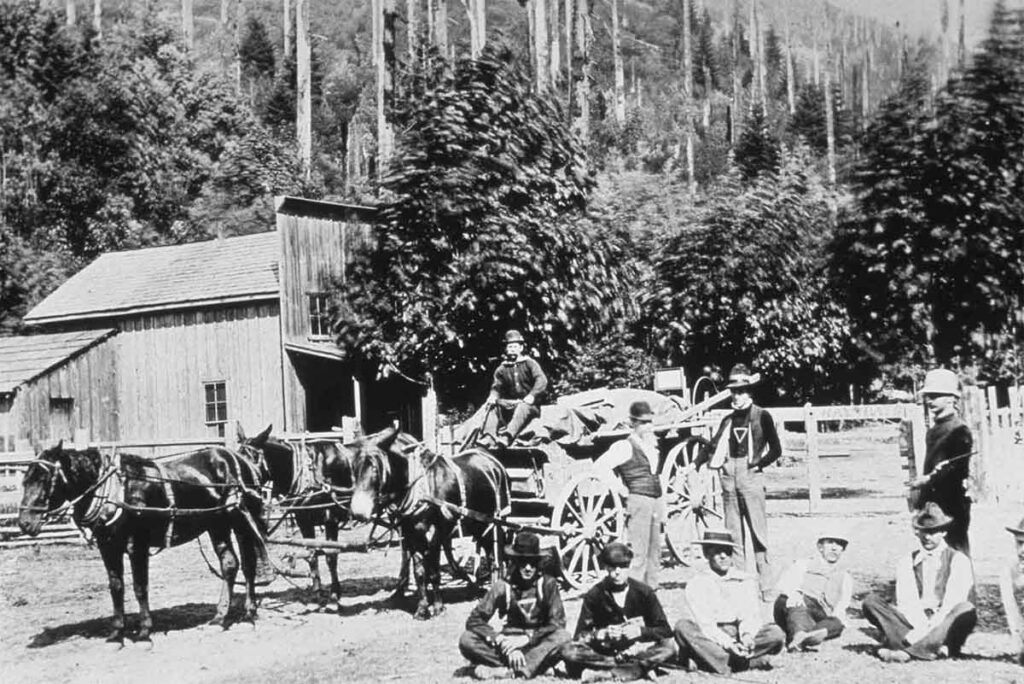
At first, Vickers worked as the eastern gatekeeper on the Barlow Road. In time, Coalman convinced him to return to the west side of Mount Hood, promising to help him with legal services if needed.
No charges were ever brought against him.
Vickers loved the Summit Meadow area. He filed a squatter’s claim and started building between his work on the road. In 1866, construction of the Summit House began. The building measured 20x20x32 feet, featuring a huge fireplace, upstairs sleeping quarters, and a large kitchen. Vickers built all the furniture by hand from local materials.
By the spring of 1868, as soon as the snow melted, the Summit House opened for travelers. Vickers provided food and shelter for people and livestock. He often refused payment from settlers who had little to give, earning a reputation for generosity.
In 1882, a tragedy struck Summit Meadow. A baby boy from a wagon party, the Barclay family, became ill and died at the meadow. Vickers granted permission for the boy to be buried there. The grave and headstone still remain today.
Later accounts said that Vickers personally tended the grave, keeping it marked and protected from passing livestock.
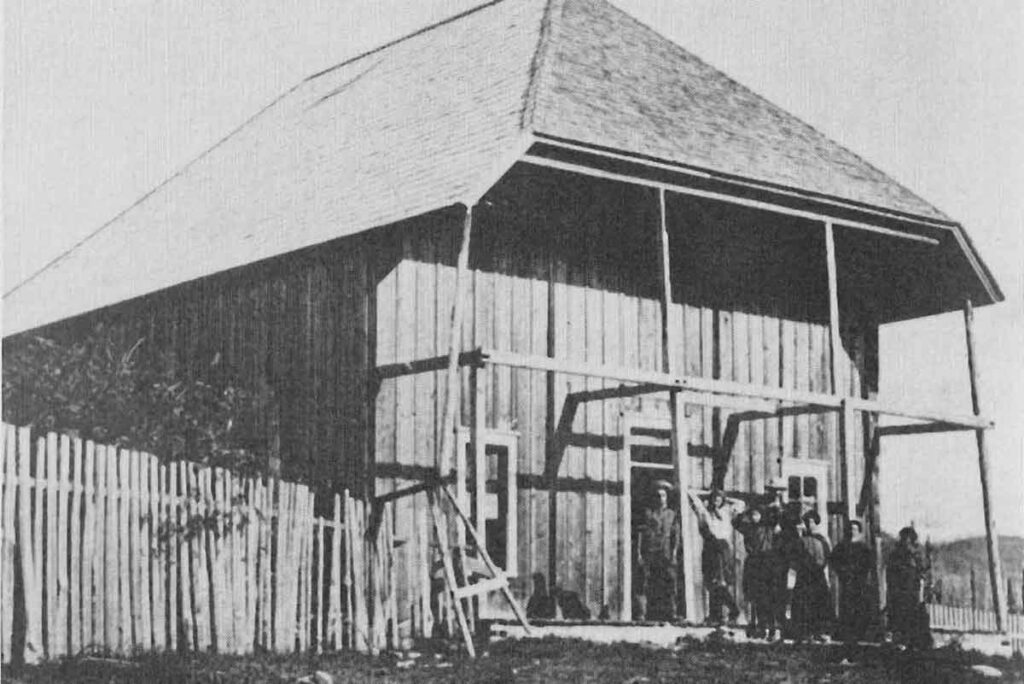
For years, Vickers remained at Summit Meadow, aiding travelers and leading hundreds to the summit of Mount Hood. Then, in August of 1883, violence shattered the peace and led to the first Murder on Mount Hood.
A man named Steele, a farmhand near the Columbia Slough, stole a shotgun and fled east. The Multnomah County Sheriff deputized two men, including the gun’s owner, Roarke, to pursue him.
The deputies tracked Steele to Eagle Creek and had their warrant reissued for Clackamas County. They learned that Steele had traded the shotgun for a powerful Sharps rifle.
Despite bad weather, they pressed on through Sandy, stopping only to buy a bottle of whiskey. Reaching the town of Salmon, near today’s Brightwood, they enlisted local trading post owner John McIntyre. One deputy, having fallen ill, returned home. McIntyre was deputized, and the search continued.
At Summit Meadow, Vickers told the men that Steele had stayed the previous night. Vickers warned them that Steele was a dangerous character and advised waiting until morning to pursue him, suggesting they rest and sober up.
Roarke insisted they continue into the night. Vickers, now deputized, reluctantly agreed to lead them.
They reached the White River Trading Post operated by Cornelius Gray. Beyond the buildings, they spotted a campfire.
Concerned about his companions’ condition, Vickers volunteered to approach Steele’s camp alone. As he rode off, he reportedly quipped, “If you hear me shout, don’t mistake it for the wind.”
Vickers rode toward the fire, confirming it was indeed Steele. As he dismounted his horse, Steele seized the Sharps rifle and shot Vickers in the stomach.
Vickers fell but managed to draw his revolver and fire into the darkness. Believing he might have wounded Steele, he emptied his gun but could not stop the fugitive.
Cornelius Gray, hearing the shots, rushed to the scene. He and others found Vickers gravely wounded, struggling to reload his revolver with trembling hands.
Vickers accused the deputies, Roarke and McIntyre, of cowardice, saying they abandoned him when he needed them most. Witnesses later agreed, noting that their horses had not actually bolted, and their retreat seemed deliberate.
A messenger rode to fetch Stephen Coalman, but it was too late. Vickers, lying inside Gray’s cabin, knew his fate.
He mentioned laudanum stored back at his lodge. Gray had nothing in his cabin to relive Vickers’s pain. Vickers acknowledged that no one could help him now. His final request was to be buried next to the Baby Barclay that he helped bury in his beloved Summit Meadow. His final words were reported as, “Tell them I did my best, for the mountain and for the law.”
At 7am, August 19, 1883 Perry Vickers died from his wounds. According to his wishes his body was loaded into a wagon and carried back to Summit Meadow and buried next to the baby.
The Mount Hood community mourned him deeply. Samuel Welch and Stephen Mitchell crafted his coffin, and Oliver Yocum officiated his burial.
Vickers is laid to rest at Summit Meadow, beside the Barclay child he had once shown such compassion toward. Their headstones remain today.
Locals remembered Vickers as “the silent sentinel of Summit Meadow,” honoring his years of guidance, kindness, and service on the mountain.
Soon after Vickers death a “religious eccentric” named Horace Campbell, known as “King David” occupied the Summit House. He rebuilt the Summit House and, behind the structure, constructed a conical shaped wooden teepee with a central fireplace and a smoke hole at the top. It was used by the last wave of immigrants over the old road.
In time, and after many occupiers of the old Summit House, the structure was fell into disrepair and was disassembled and burned on campfires by travelers. First the log furniture and then the structures. Today there’s no evidence that it even existed.
Billy Welch, The son of local rancher Samuel Welch, related a sad story about how Greeley, a yellow Newfoundland and Eskimo dog mix owned by Vickers, refused to leave his master’s grave for days. Finally he and Drum, a spotted hound, also belonging to Vickers, were brought to Welches to live with Samuel Welch, who had been a close friend with Vickers for years. It was necessary to keep a close watch on Greeley for days, because he wanted to return up the Barlow Trail to Summit Meadow where is master was buried.

Stephen Coalman kept Vickers’ blood-stained coveralls for years, hoping they might someday serve as evidence.
Later, a horse thief hanged in eastern Oregon claimed to have killed a man in the Cascade Mountains. It was widely assumed this was Steele.
Coalman, realizing the case had ended, eventually burned Vickers’ coveralls. Thus ended the story of Mount Hood’s first murder—and the enduring legend of Perry Vickers.
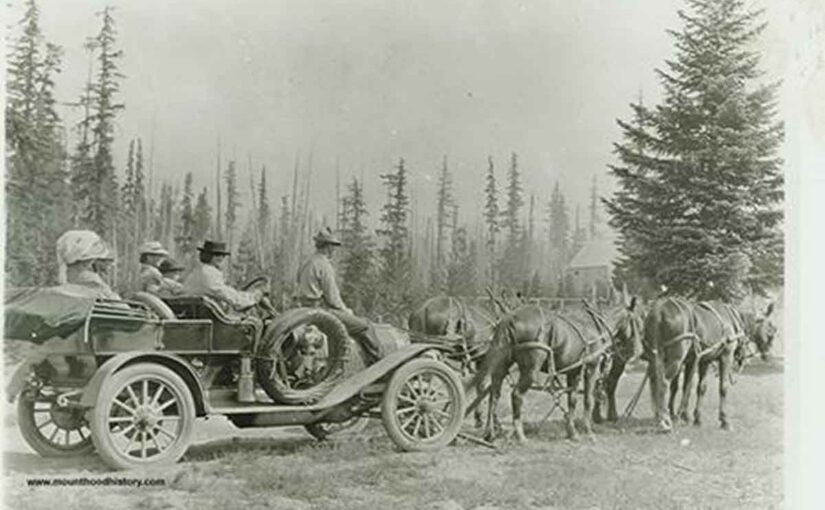
Four Horsepower.
An early automobile pulls in to Government Camp, Oregon under auxiliary power.

Protest at Timberline Lodge – Unfair to skiers.
Timberline Lodge ‘s first Winter was a rocky one business wise.
“From W. P. Gray
The News-Telegram
Portland, Oregon
12-23-1937
Two months after its dedication by President Roosevelt, Timberline Lodge on Mt. Hood, Oregon, $650,000 structure built with WPA money, was picketed by skiers who demanded immediate opening of the lodge’s sanitary facilities to skiers. No operator has been found for the massive Alpine hostelry, and “keep out” signs bar all doors. A corporation of Portland business men is reportedly forming to open the lodge. The picketing skier above is Ken Soult.”
#oregon #oregonhistory #timberlinelodge #mthoodhistory #mounthoodhistory

Timberline Summer circa 1940